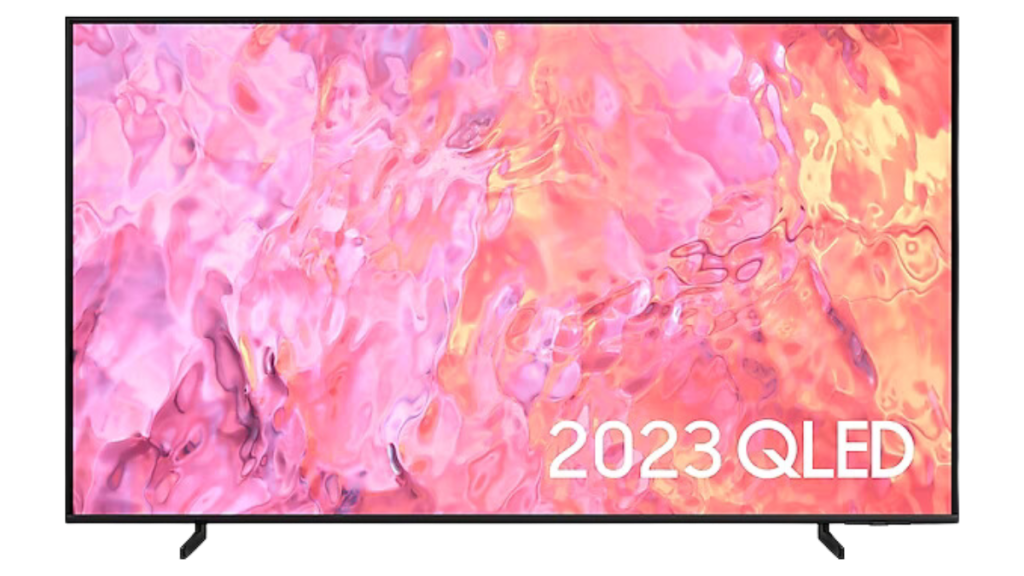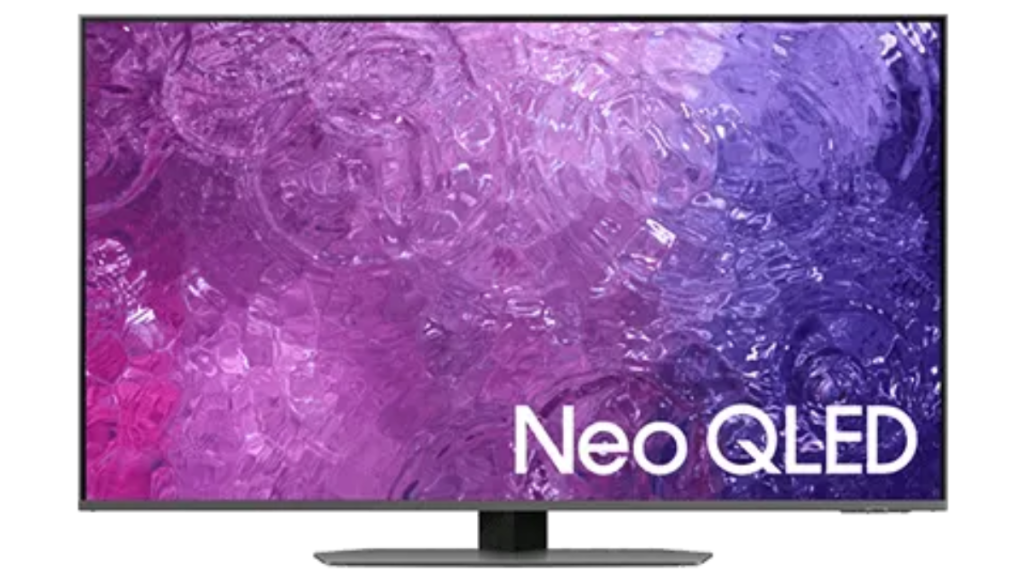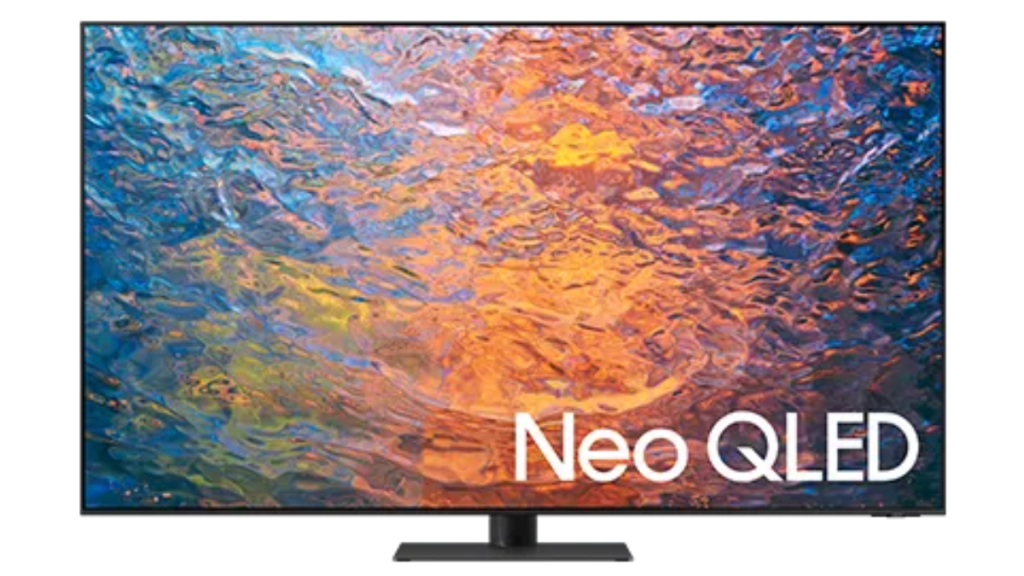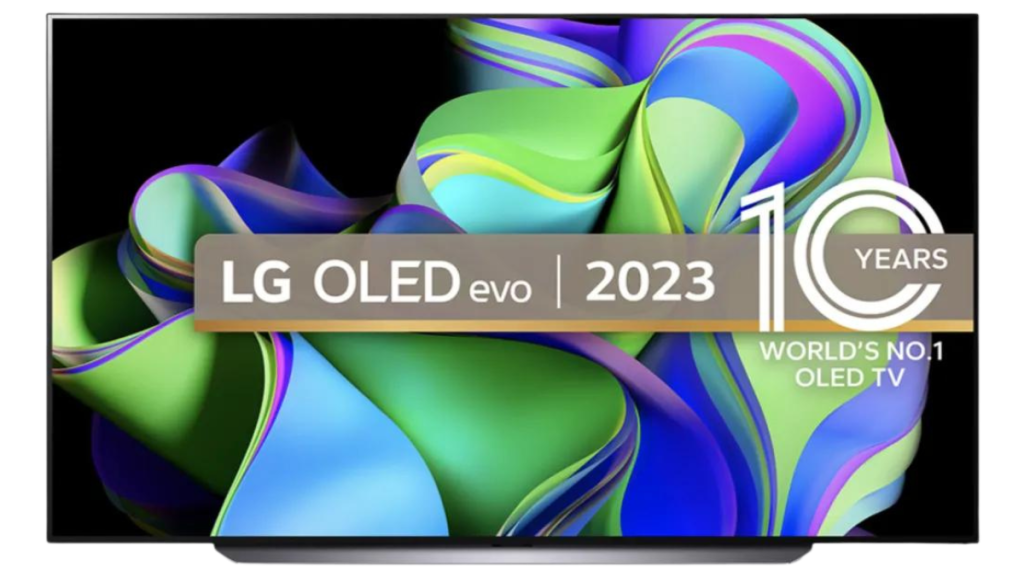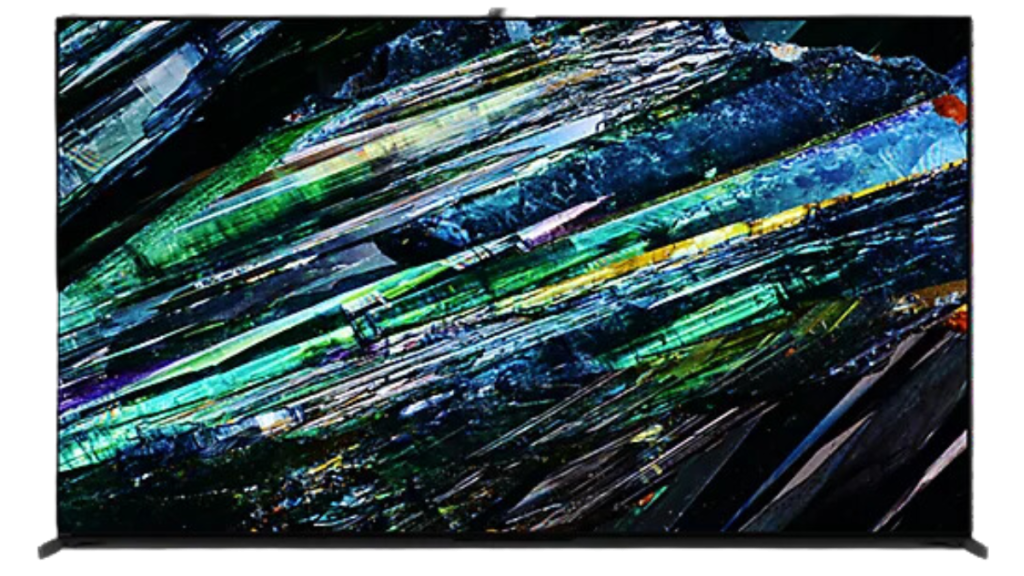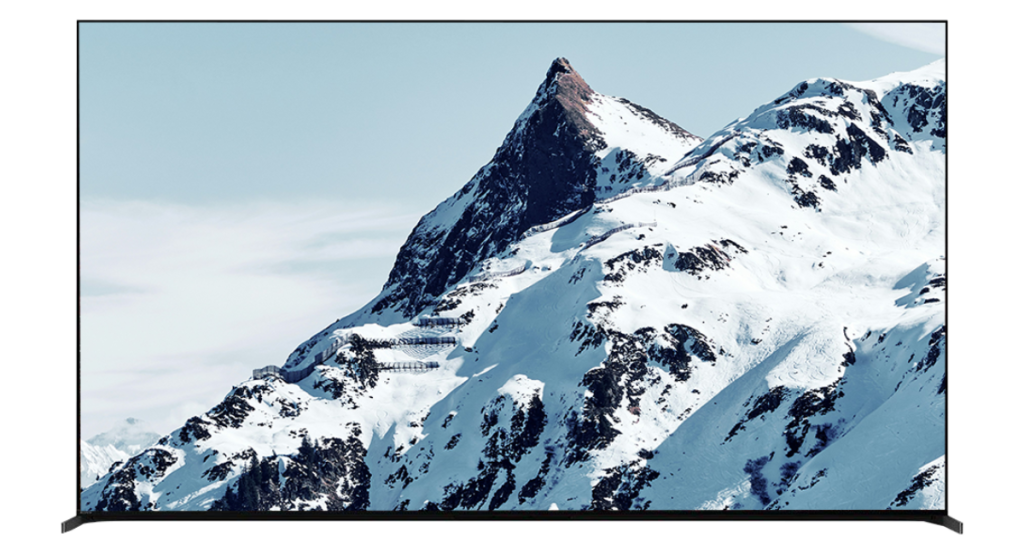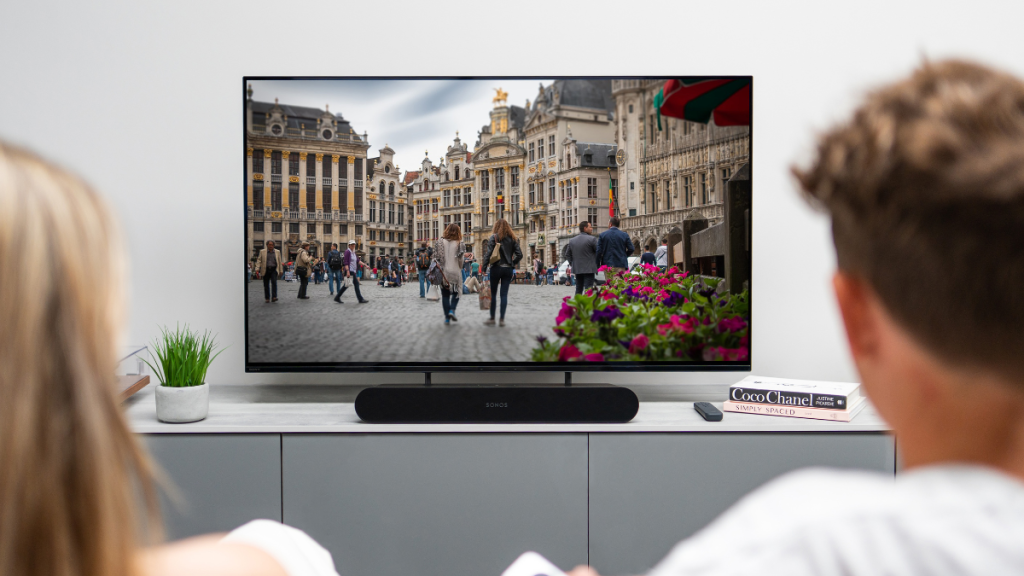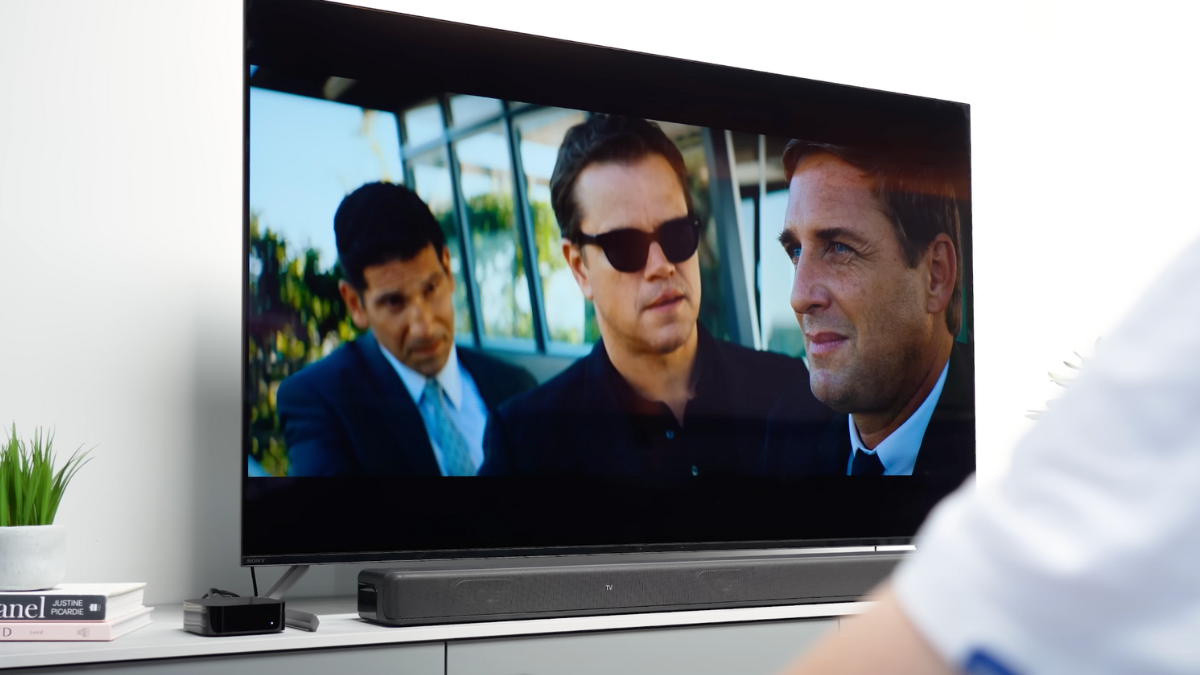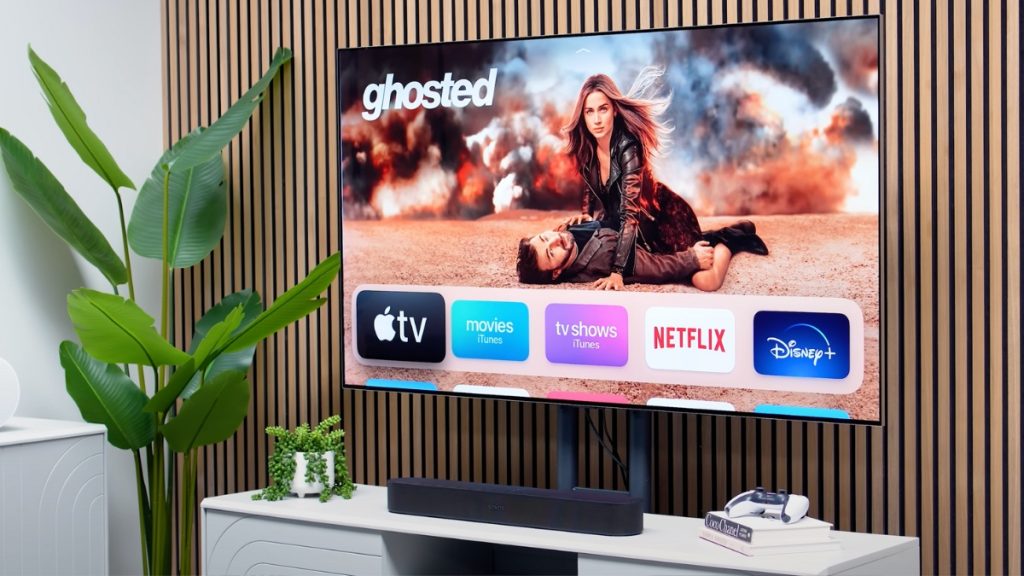Your Mini Basket
Black Friday TV Deals 2024 are HERE!
QLED vs OLED: What's The Difference?
When shopping for a TV, you might come across acronyms like QLED and OLED. While they look almost identical on paper, these are actually two completely different TV panel types, and both offer their own set of advantages and disadvantages that are essential to know when choosing the right TV for your space.
Throughout this guide, we’ll not only be breaking down what both of these TV technologies are but we’ll also help you dissect the key differences between OLED TVs and QLED TVs to figure out which technology type is right for you.
Jump To:
If you’re still in the early stages of your research journey, then you might find our Complete TV Panel Type Buying Guide helpful:
What IS QLED?
Developed by Samsung, QLED (which stands for Quantum Dot Light-Emitting Diode) is a TV display technology that works similarly to conventional LED/LCD TVs.
Where traditional LED TVs use a white backlight and colour filters to create the image on screen, QLED TVs still use an LCD panel, but they use a blue backlight that shines through a layer of quantum dots to produce the image.
These quantum dots convert the blue light into various colours that you see on-screen, resulting in a wider and more accurate colour range.
This wider colour range means QLED TVs can display vibrant colours at any brightness level, from dark, shadowy scenes to bright explosions. They also excel with HDR content, offering stunning contrast and detail in both highlights and shadows.
To put it simply, a QLED TV is just like a traditional LED TV, except they use a blue backlight and, most importantly, quantum dots to unlock a wider and richer spectrum of colours.
Are QLED TVs Worth It?
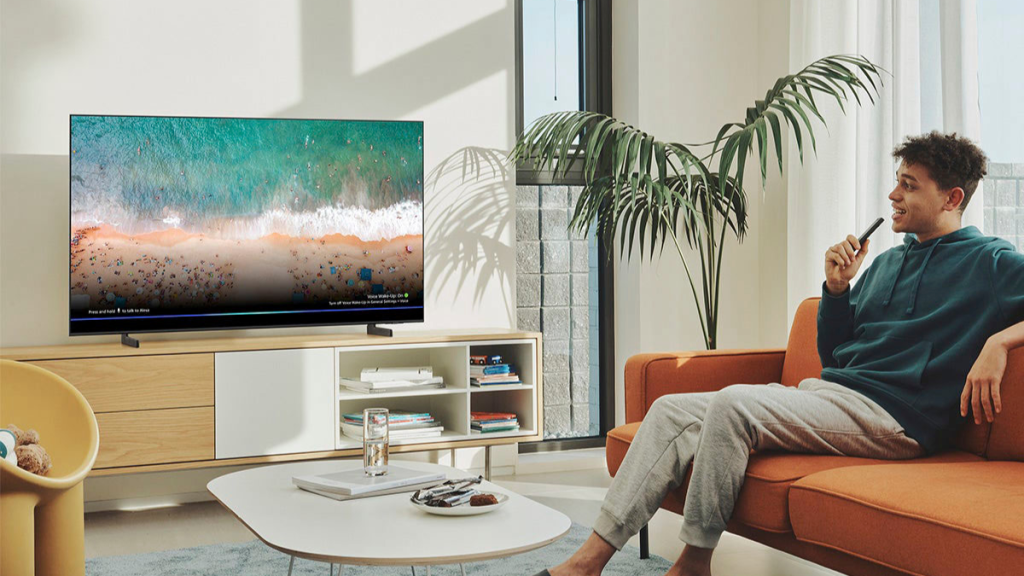
| QLED Pros | QLED Cons |
| ✅ Accurate and vibrant colours | ❌ Can experience motion blur |
| ✅ Higher brightness levels | ❌ Blacks not as deep as OLED |
| ✅ Enhanced contrast | ❌ Potential for blooming |
While both LED and QLED TVs use a backlight to illuminate the screen, these quantum dots act like colour enhancers. They take the light from the backlight and manipulate it to create a visibly wider range of colours compared to traditional LED TVs, which translates to a richer, more vibrant picture on your screen.
Although QLED TVs boast stunning colours, some downsides do exist. The use of a backlight can cause blooming (haloing), and the quantum dots can’t quite match the true blacks produced by OLED. Fast motion scenes might blur due to limitations in handling rapid lighting changes, and viewing angles can be slightly limited because of the backlight technology.
Who Are QLED TVs Right For?
QLED TVs are a perfect choice for bright living spaces. Their higher brightness levels ensure great picture quality, even in sunny rooms. Plus, they handle a wide variety of content well, making them ideal for all your viewing needs.
| 💡 What About Neo-QLED? Now you might’ve heard of the term Neo QLED in your hunt for a new TV. Neo QLED is another Samsung developed display technology that is essentially an upgraded version of QLED technology. The biggest difference between Neo QLED and QLED TVs is the backlight they use. While QLED TVs use traditional LEDs, Neo QLED TVs uses what’s known as mini LEDs to illuminate the screen. These mini LEDs are significantly smaller than standard LEDs, allowing for thousands more to be packed behind the screen. The use of more Mini LEDs means the TV will have more backlight zones, which enables Neo QLED TVs to achieve more precise dimming control. This leads to deeper blacks, brighter whites, and overall better contrast compared to QLED. Samsung also claims that Neo QLED TVs benefit from improved colour accuracy and wider colour gamuts, which also help to improve the visual experience and push the likes of OLED much closer. For more on Mini LED, read our Mini LED vs. OLED vs. Micro LED: Pick Your Perfect TV Panel blog. |
Our Favourite QLED & Neo QLED TVs
What IS OLED?
OLED stands for Organic Light-Emitting Diode, and these TVs are lauded for their cinematic picture quality and are the top competitor to backlit LED or LCD TVs.
Unlike LED TVs, OLED panels don't require a backlight. Rather, each individual pixel generates its own light and colour, allowing for near-perfect blacks, incredible contrast, and wide viewing angles.
If you really want to sound like an expert, you can use the term "self-emissive" when talking about OLED TVs. This essentially refers to the way that the pixels in these displays create their own light.
Historically, OLED TVs have been our go-to recommendation for movie lovers, those with darker rooms and gamers due to their pixel-perfect control, pure blacks, fast refresh rates and smooth motion. However, it's worth remembering that OLED TVs do tend to be more expensive, have lower peak brightness compared to some LEDs, have a risk of burn-in and come in fewer screen sizes.
That being said, while peak brightness has traditionally been a weakness for OLED TVs, recent flagships from major brands like the LG G3, Samsung S95C and Sony A95L are pushing the boundaries of what’s expected from OLEDs.
These models utilise upgraded panels with MLA-OLED and QD-OLED technology, which significantly increase brightness levels and colour accuracy. We won't delve into the specifics here, but if you're curious, check out our blog comparing MLA vs. QD-OLED for a deeper dive.
Are OLED TVs Worth It?
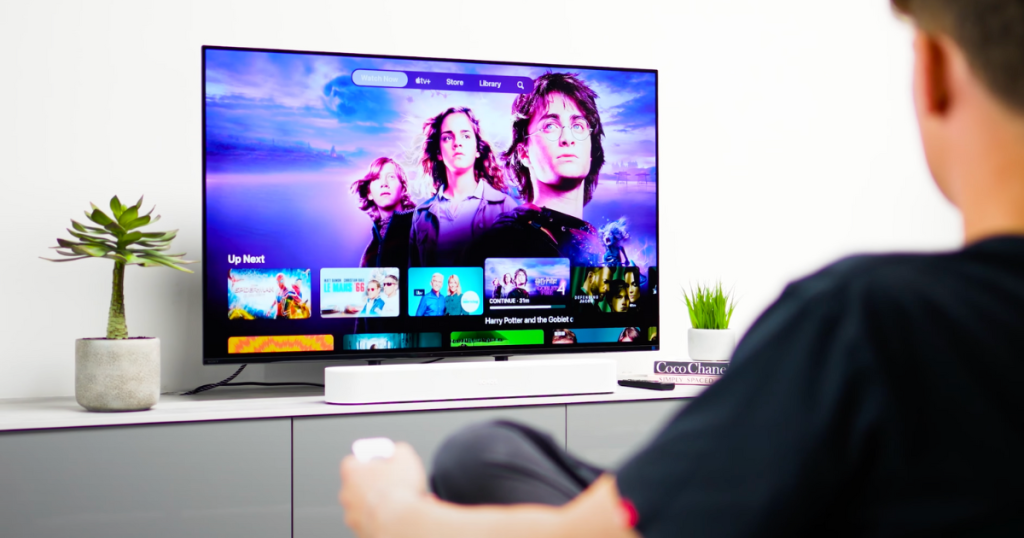
| OLED Pros | OLED Cons |
| ✅ Pure blacks | ❌ Can struggle with brightness |
| ✅ Infinite contrast ratio | ❌ Potential for burn-in |
| ✅ Punchy, vibrant colours | |
| ✅ Wide viewing angles |
Who Are OLED TVs Right For?
OLED TVs are perfect for movie and TV lovers who want the best picture quality and gamers who need lightning-fast response times, especially if you watch in a dark room or in the evening regularly.
Our Favourite OLED TVs
QLED vs OLED: Which Is Better?
QLED and OLED are fundamentally different TV panel technologies, and deciding between them boils down to a few key differences. Here's a breakdown of the four key factors we recommend considering when choosing between QLED and OLED TVs:
Picture Quality:
For us, OLED wins thanks to its perfect blacks and infinite contrast, making it the ideal choice for a truly cinematic experience. That being said, QLED does offer good colour reproduction and a higher peak brightness, making it a suitable option for well-lit spaces.
Winner: OLED
Motion & Gaming:
OLED boasts the fastest response times and superior motion handling, perfect for competitive gamers. While QLED will be good enough for most gamers, OLED TVs deliver the ultimate edge when it comes to speed.
Winner: OLED
Brightness:
On the whole, QLED TVs tend to offer a brighter performance thanks to their LED backlight and quantum dot technology, making them a better choice for bright rooms. OLED brightness has significantly improved with newer models, but broadly speaking, they still can't quite match QLED in this area.
Winner: QLED
Price & Screen Size
Generally, QLED TVs are more affordable and offer a wider range of screen sizes. OLED TVs currently carry a premium price tag and tend to come in a more limited selection of sizes (there are exceptions). However, what you gain in terms of the stepped up cinematic performance is worth it, in our opinion.
Winner: QLED
| 💡 Remember: While OLED and QLED TVs offer their own distinct advantages, a big chunk of a TV's picture quality is dependent on its processing power. When comparing TVs, make sure you consider both the screen type and the processing capabilities, because a good TV with a powerful processor can sometimes bridge the gap between different types of panel technologies. |
QLED Vs OLED: WHich Should You Buy?
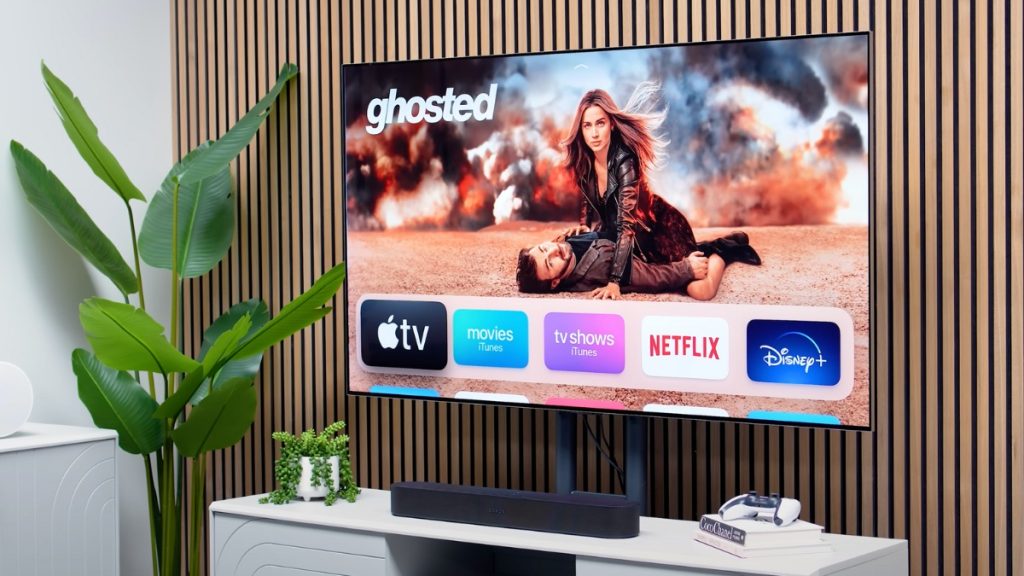
The constant battle for dominance among TV manufacturers has fuelled rapid innovation in the display technology landscape. While OLED TVs have traditionally reigned supreme for their inky blacks and cinema-like picture quality, 2024 has seen QLED and Neo QLED TVs improve significantly, offering their own benefits and considerably narrowing the gap in performance.
We still love OLED TVs for their exceptional cinematic picture quality. However, brands like Samsung are pushing boundaries with their latest Neo QLEDs, claiming they can now actively rival OLED in terms of performance. So, although they offer something different, this ultimately translates to more fantastic choices for consumers like us – a win-win situation!
Ultimately, the best TV is the one that wows YOU in your space. The key thing to remember is not to sweat if you end up having to choose QLED over OLED or vice versa - both offer amazing performance and are suitable for a variety of different use cases.
If you'd like any more information about anything that's been discussed, please reach out to info@smarthomesounds.co.uk, via Live Chat on our website or on 0800 677 1100 where one of our friendly advisors will be happy to help.
Other USeFul Content
For more information about screen types and TV technology, please take a look at our TV Buying Guide.
More On TV Tech:
>> LED vs. OLED vs. QLED - What Do They All Mean and Which Is Right for Me?
>> Full-Array vs. OLED: The Differences That Actually Matter
Helpful content:
Video: How To Choose The Right TV Screen Size
Video: Sony A80L: The Ultimate All-Rounder OLED
Video: LG C3 vs. Sony A90K: Don't Make The Wrong Choice
Interested in the difference between OLED TV screens and their QLED counterparts? Check out our handy blog
The Complete Guide to Mini LED, OLED, & Micro LED TVs
In the world of modern TV technology, the competition between panel types continues to drive innovation with Mini LED, OLED and Micro LED often at the forefront.
Each panel type offers its own advantages and noteworthy features but understanding the key differences can help you make a more informed purchase decision and ultimately, find the right TV for your space.
So, skip the tech jargon, we've got you covered! This guide dives deep into Mini LED, OLED, and Micro LED technologies, explaining their features and the key differences that impact your viewing experience.
Jump To:
If you’re still at the early stages of your research journey then you might find our Complete TV Panel Type Buying Guide helpful:
Ok, let’s kick off with understanding the technology behind these TV types.
What is Mini LED?
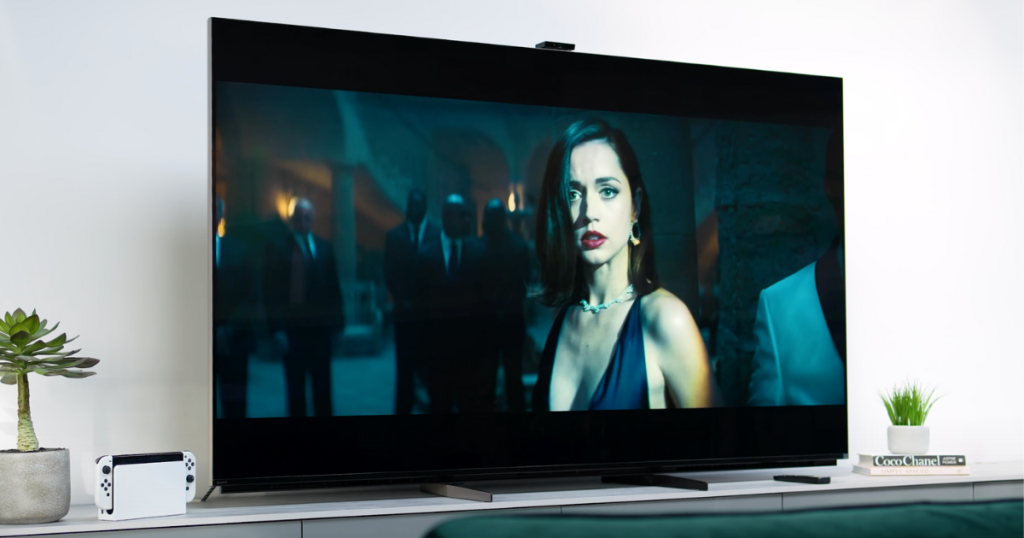
Mini LED is an advanced LED technology which levels up performance when it comes to backlighting. These models use much smaller LEDs to backlight the LCD panel meaning there can be thousands arranged in a grid.
Thanks to this, we get a brighter picture and more control over contrast and brightness for more precise images. We also have more localised dimming zones for brighter highlights and deeper blacks.
Because Mini LED models use a backlight, there is potential for blooming to occur where a halo of light might appear around a bright object on a dark background. This issue is more pronounced on more affordable LED panel types but still something to be aware of with any backlit TV.
| 💡 What is blooming? Also known as the halo effect, blooming is an image quality issue on some LCD TVs. It occurs when light from the backlight, which illuminates the entire screen, bleeds into areas that should be dark. This creates a faint, glowing haze around bright objects displayed on a dark background. |
| Mini LED Pros | Mini LED Cons |
| ✅ No risk of burn-in | ❌ Potential for blooming |
| ✅ Brighter performance than OLED models | ❌ Level of variability in performance |
Who Are Mini LED TVs Best Suited For?
In general, we would recommend Mini LED TVs for those who watch content with a mix of bright and dark scenes and for anyone wanting a premium alternative to OLED.
What is OLED?
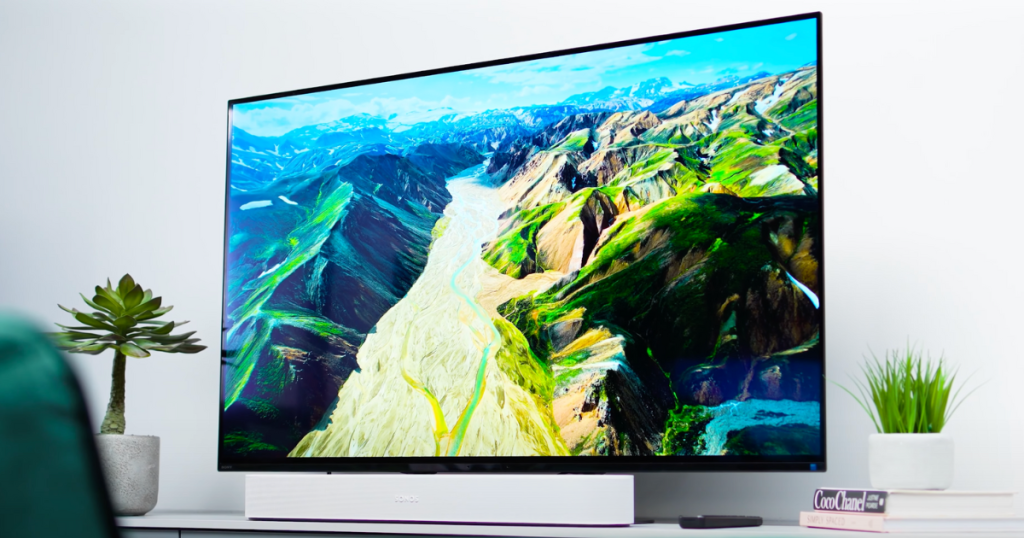
OLED is the main alternative to backlit TV models and is paving the way in this area. OLED stands for organic light-emitting diode and these TVs don’t need a backlight because each individual pixel can emit its own light. This means every pixel can be completely turned on and off which is why OLEDs are renowned for their high contrast images and perfect black levels with no risk of blooming.
OLEDs are renowned for their great viewing angles and are a brilliant option for darker rooms as many believe they offer the most captivating picture for movie watching.
In general, OLEDs offer a faster response time, higher refresh rates and smoother motion than their LED counterparts, making them a solid option for gaming.
But no TV tech is without its downsides. Older OLEDs have a tendency to be more susceptible to burn-in and traditional WOLED or WRGB OLEDs can also struggle to compete with LED TVs when it comes to brightness. So, for the brightest spaces, this might not be your first choice.
| 💡 What is burn-in? Burn-in refers to a faint, lasting image that remains visible on a TV screen even after changing content. It occurs when a static image, like sports, news channel logos or game HUDs, remain on the screen for extended periods, causing uneven wear on the light-emitting pixels. The good news? Newer OLEDs, Mini LEDs, and Micro LEDs are much more resilient to burn-in thanks to their advanced technologies like pixel refresher or pixel shift. So, while it's still technically possible, it's a significantly reduced threat nowadays. |
The MLA and QD-OLED TVs released recently like the LG G3 and Sony A95L have worked to combat this. However, these TVs also tend to come with higher price tags and in a more limited range of screen sizes. Keen to see how they compare? Read our LG G3 vs. Sony A95L: Which OLED TV Should You Buy? article.
| OLED Pros | OLED Cons |
| ✅ Pure blacks | ❌ Can struggle with brightness |
| ✅ Infinite contrast ratio | ❌ Potential for burn-in |
| ✅ Punchy, vibrant colours | |
| ✅ Wide viewing angles |
Who Are OLED TVs Best Suited For?
In general, we’d recommend OLED TVs for those after the most cinematic performance, particularly if you have a darker environment or tend to do a lot of your TV viewing in the evenings. OLEDs are also our recommendation for gaming thanks to the impressive picture quality and fast response time.
More: Full Array LED vs OLED: The Differences that Actually Matter
What is Micro LED
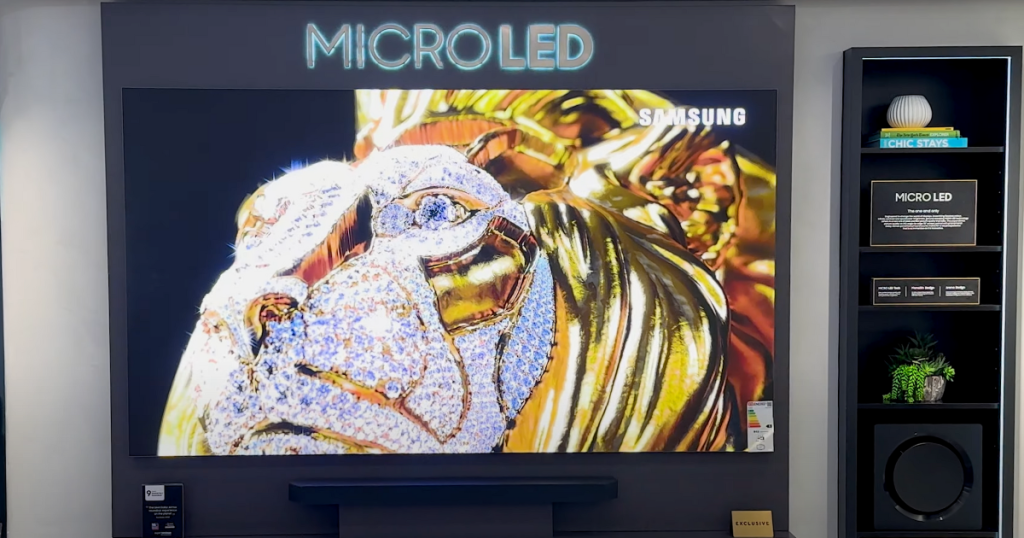
Micro LED currently represents the pinnacle of display innovation and isn't widely available. In these TVs, each pixel is an LED, allowing for millions of them to be individually controlled.
Unlike traditional displays, Micro LED pixels emit their own light directly without the need for a separate backlight, so they can be individually turned on or off or can display a completely different colour to the pixels next to them.
This means we get far more accurate colour control and near-perfect contrast. These TVs also offer superior brightness levels, energy efficiency and longevity.
However, because of the complex manufacturing process, Micro LED TVs are currently limited to very large screen sizes and come with a hefty price tag that keeps them out of reach for most consumers.
If this technology becomes more affordable, then this looks like the future for TVs, taking the best of OLED and LED performance and delivering a brighter and longer lasting alternative.
| Micro LED Pros | Micro LED Cons |
| ✅ Incredible picture quality | ❌ VERY expensive |
| ✅ Impressive brightness | ❌ Not widely available |
| ✅ Vivid colours | ❌ Limited to larger screen sizes only |
Mini LED vs OLED vs Micro LED: Key Differences
Mini LED, OLED, and Micro LED each offer unique advantages, but understanding their key differences is crucial.
Brightness and Contrast: Micro LED excels in brightness and contrast, followed closely by Mini LED, while OLED offers superior black levels.
Colour Accuracy: Micro LED and OLED both offer excellent colour accuracy, with MicroLED having the edge in terms of brightness.
Longevity: Micro LED boasts superior longevity due to their individual pixel control and lack of organic materials prone to degradation
Price and Availability: Mini LED and OLED TVs are more widely available and much more affordable compared to Micro LED, which is currently limited to large screen sizes and comes with a considerably higher price tag.
While picture quality and features matter, screen size also plays a crucial role in your viewing experience. Don't settle for less! Read our guide on How to find the perfect TV size for you.
Verdict: Which Should You Buy?
When it comes to these TV panel types, Mini LED, OLED and MicroLED all bring their own set of advantages and considerations to the table.
Mini LED excels in precision and brightness control, making it an attractive option for users prioritising bright and vibrant performance. OLED technology, with its true black levels and superior contrast, remains a better choice for cinema enthusiasts and those seeking a truly immersive cinematic viewing experience. Whereas Micro LED stands out as the cutting-edge display technology, delivering the best picture quality, albeit at a much more premium price.
Ultimately, the choice between these technologies depends on individual preferences, viewing habits, and budget constraints. Whether you prioritise brightness, contrast, or colour accuracy, there's a TV technology tailored to enhance your entertainment experience. As advancements continue to push the boundaries of display technology, there's no doubt that consumers can look forward to even more immersive and captivating viewing experiences in the future.
If you'd like any more information about anything that's been discussed, please reach out to info@smarthomesounds.co.uk, via Live Chat on our website or on 0800 677 1100 where one of our expert advisors will be happy to help.
Other Useful Content
For more information about screen types and TV technology, please take a look at our TV Buying Guide.
More On TV Tech:
>> MLA vs QD-OLED: The Differences That Actually Matter
>> LED vs. OLED vs. QLED - What Do They All Mean and Which Is Right for Me?
>> Full-Array vs. OLED: The Differences That Actually Matter
>> QLED vs OLED: The Differences That Actually Matter
Helpful content:
Video: How To Choose The Right TV Screen Size
Video: Sony A80L: The Ultimate All-Rounder OLED
Video: LG C3 vs. Sony A90K: Don't Make The Wrong Choice
Confused by Mini LED, OLED or MicroLED TV technology? We break it down to help you choose the best screen for you.
Is The WiiM Amp right For You?
Linkplay Technology (or WiiM), known for their affordable yet impressive streaming devices, has introduced their latest flagship product, the WiiM Amp. Despite being the brand's priciest offering at £299, this amplifier has all the makings of being an absolute bargain in the hi-fi world. Throughout this WiiM Amp Review, we’ll provide a comprehensive look at all of the features and performance of this promising all-in-one amplifier to see if its right for you.
Its worth knowing that, unlike the WiiM Pro or WiiM Pro Plus, the WiiM Amp is an all-in-one streaming amplifier rather than a dedicated music streamer. So, this amplifier is designed to provide both streaming capabilities and amplification to your passive speakers, rather than needing an external amplifier to do so.
Competition in this category is stiff. However, just like its more expensive competitors like the Sonos Amp and Bluesound Powernode Edge, the WiiM Amp aims to provide the same combination of top-notch streaming capabilities and amplification (at a snip of the price, of course).
Prefer watching a video? Check out our WiiM Amp Review on YouTube.
Design
Contrary to our expectations, the WiiM Amp boasts a premium finish with rounded edges, a space grey colourway, and a sleek aluminium finish, reminiscent of Apple’s signature hardware.
It stands out with its lack of plastic casing, setting it apart from other WiiM devices like the WiiM Pro Plus and WiiM Pro, making a huge leap forward to match the style of its more expensive competitors like the Sonos Amp.
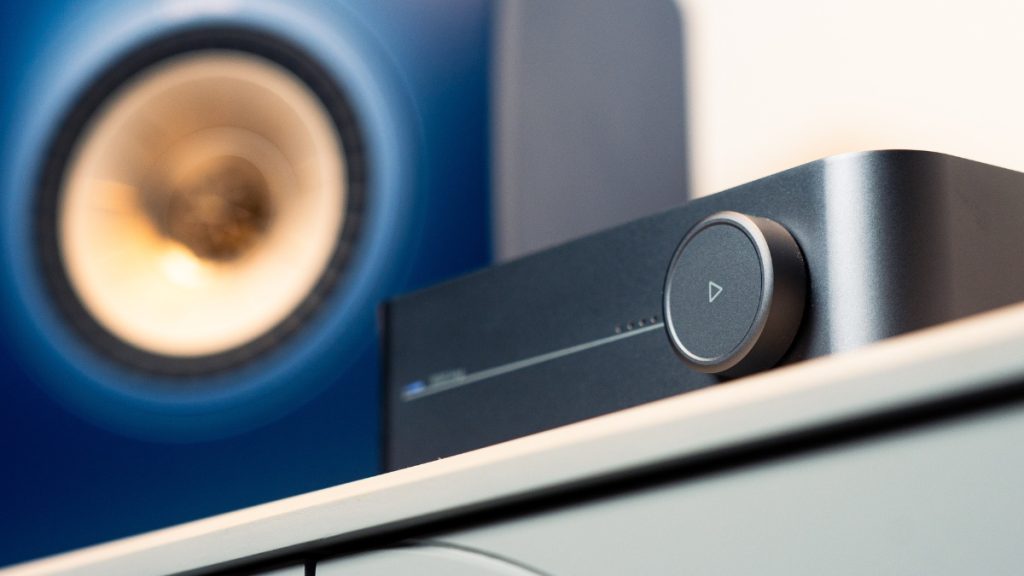
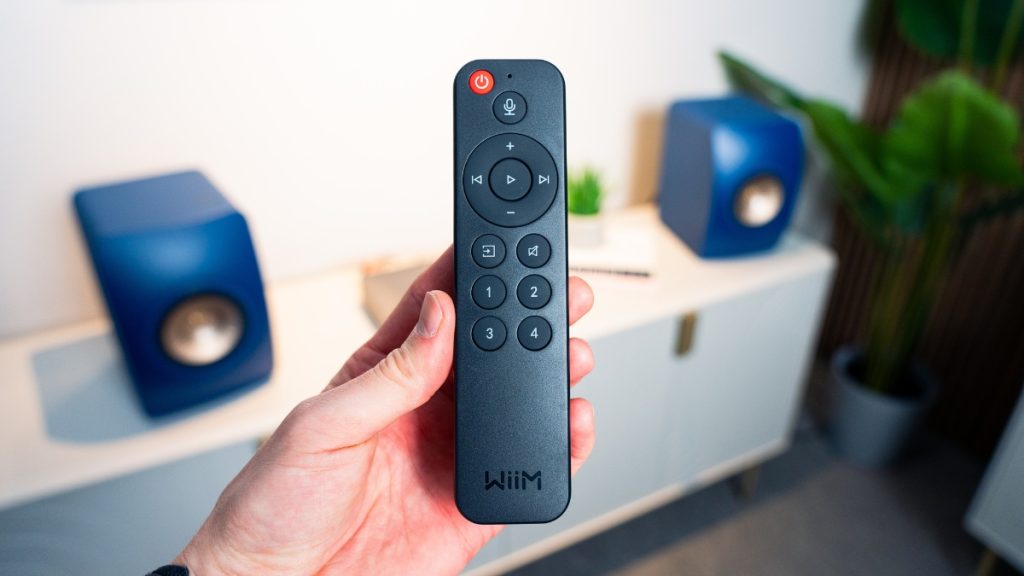
To put it simply, we’re big fans of this new and improved styling. Subtle details like the branding and the volume dial tie the whole design together and make this feel like a really neat piece of hi-fi kit. It’s also ultra-compact, so it's going to be perfect for either taking pride of place on your media unit or for tucking away out of sight.
The only pitfall is the plastic Bluetooth remote. It has all the usual controls like play, pause, skipping tracks, adjusting volume, and muting. Plus, there's built-in Alexa for voice commands, and you can customise some presets too. However, it would’ve been nice to see something that was as premium as the rest of the unit.
Features
When it comes to wireless streaming options, the WiiM Amp ticks a lot of boxes. There’s support for a variety of popular music services, like Apple AirPlay 2, Chromecast, Spotify Connect, Tidal Connect, Alexa Cast, DLNA and two-way Bluetooth. You’ve also got all the usual audio format support, like MP3, FLAC, ALAC and AAC.
WiiM has also taken the fight to brands like Sonos by integrating key services directly into their dedicated companion app, including popular platforms such as Tidal, Amazon Music, Deezer, and Quboz.
We’ve heard rumours that WiiM could also be adding dedicated Apple music support in the future, which could be huge as only Sonos currently has that privilege. However, only time will tell if this comes to fruition.
Its also worth noting that while the WiiM Amp isn't currently Roon-ready, the company anticipates acquiring Roon certification for it very soon, ensuring it aligns with the rest of their product lineup.
Connectivity
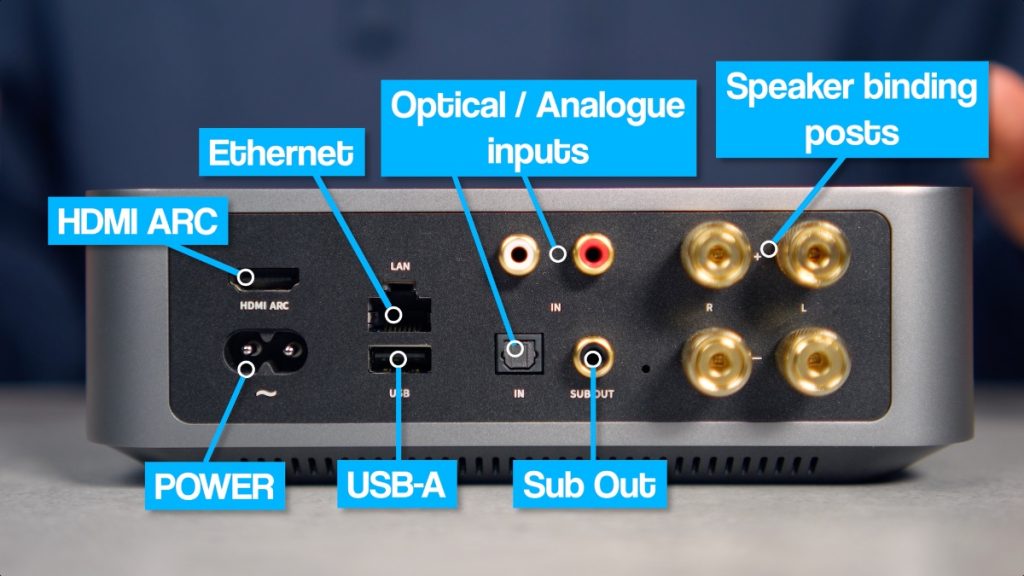
On the rear panel, you'll find a comprehensive array of essential hardwired inputs and outputs. This includes standard speaker binding posts, a subwoofer output, optical and analogue inputs, USB port for connecting your hard drives, and an Ethernet port. Think of this as the hub for all of your music needs.
Notably, there's also an HDMI ARC connection, allowing you to seamlessly connect the system to your TV. We weren’t expecting this feature by any means, but it definitely adds great value at this sort of price point.
We’ve been really impressed by the overall blend of connectivity and streaming options offered by a product at this price point. Whether you’re an audiophile or a newbie to high-fidelity audio, there really is something for everyone.
App Functionality
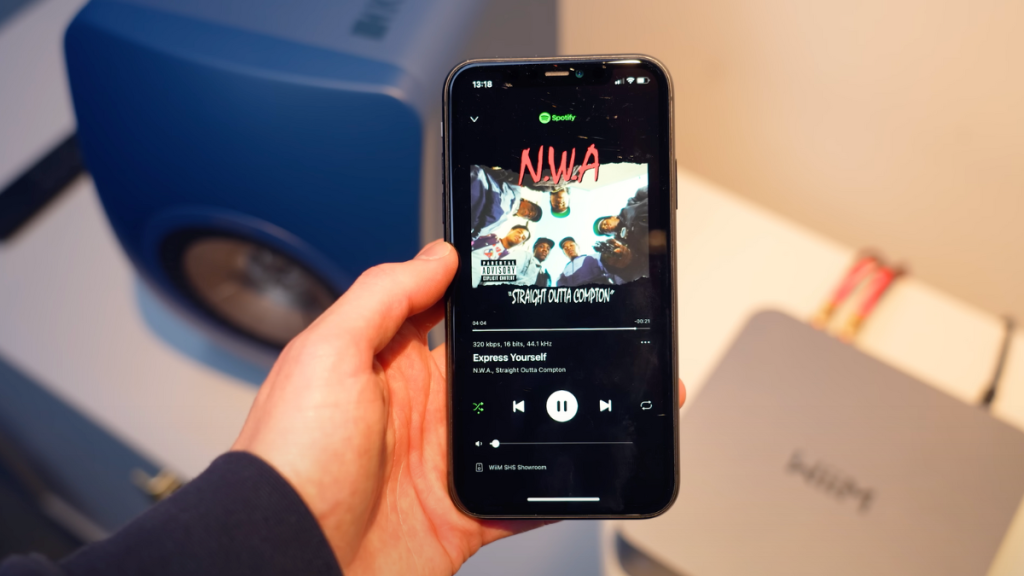
The WiiM Home App was a real standout in our testing. Setting up a Wi-Fi connection is a straightforward process and the app's interface is smooth, stable, and impressively quick.
Performance-wise It was actually pretty reminiscent of the Sonos app, and there were some really intuitive features built-in, like insights into what resolution audio you’re currently tuned into.
The app also offers a user-friendly interface with 24 preset EQ settings, a versatile 10-band graphic EQ for handy fine-tuning and a 4-band parametric EQ for more granular refinements.
Managing presets or exploring built-in services is user-friendly and efficient. So, while it falls slightly short of market-leading interfaces like the Sonos app on the whole, the WiiM Home app definitely exceeded our expectations and offers a performance that defies its price point.
Audio Performance
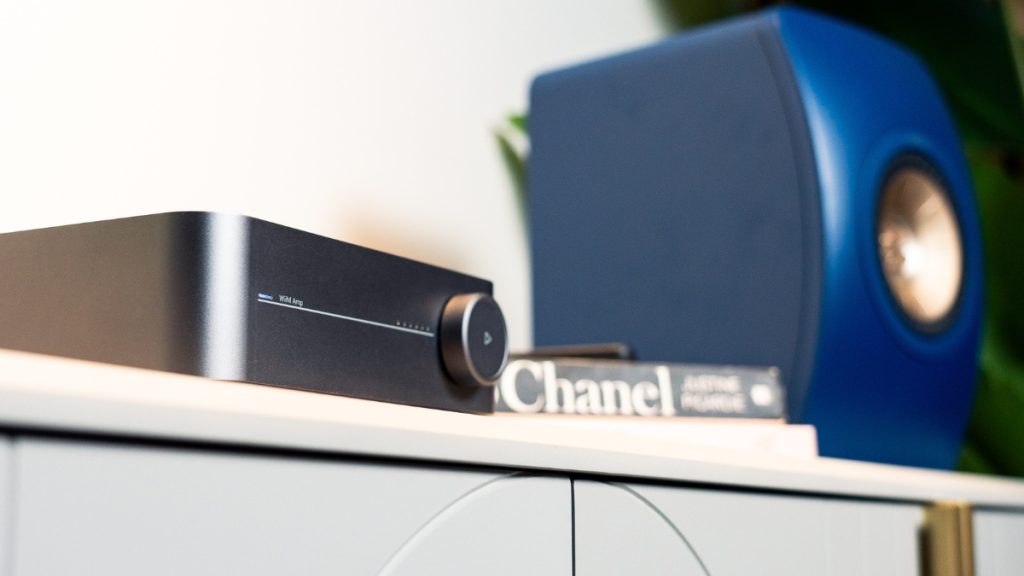
In terms of audio specifications, the WiiM Amp supports up to 192 kHz/24-bit audio with an ESS Sabre ES9018 DAC and a Class-D Texas Instruments T1 3255 chipset, but how does it fare when it’s put into practice? Well, we've been thoroughly impressed. Pairing it with our trusty KEF LS50 Meta’s, the WiiM Amp proved itself to be a remarkably capable little unit, regardless of the playback methods we’ve tested it with.
The sound reproduction is great, offering a clean and lean profile with ample volume and power to get a lot from our loudspeakers. Transitioning between sources was a breeze, and despite the occasional lag, the overall experience was a pretty positive one.
Another standout feature was the level of detail. The strings and bass lines on Dominique Fils-Aime’s latest album “Our Roots Run Deep, particularly the track ‘Rise’, were a real standout. In general, the WiiM Amp handles every genre with finesse, showcasing its versatility as an amplifier that can navigate the diverse landscape of music anywhere in your home.
Sure, the WiiM Amp won't compete with the richness and luxuriousness of some of the more premium amplifiers on the market. However, at its price point, there's nothing out there quite as functional. We’re having to draw comparisons to products that cost two or even three times the price, which does make it seem like a very compelling choice. Comparing it to its direct rivals, the Bluesound Powernode Edge and the Sonos Amp, sonically speaking, we would say they do have the edge. But for the difference in price, can you really complain?
We also had the chance to test the system with our KEF KC62 subwoofer. With a bit of tweaking using the bass crossover in the WiiM Home App (which, by the way, was impressively user-friendly), the performance was surprisingly close to that of the Powernode Edge and the Sonos Amp when paired with the same sub. While more testing definitely needs to be done, if you're on the lookout for an effective amplifier to enhance your setup's bass, this looks like a really promising option.
More: Sonos Amp Review - Is This Amplifier For You?
Our Verdict
From our initial experiences, the WiiM Amp has exceeded our expectations for a £299 unit. While it may not outperform competitors in every aspect, its overall package—combining connectivity, style, functionality, and sound quality—makes it a solid alternative, especially for those not solely committed to another ecosystem like Sonos.
We’ve definitely got more testing to be done, and we’ll update you on any new findings, but from our first hands-on experiences, things are set to be exciting!
Other UseFul Content
Video: Sonos Amp Lowdown: Everything you need to know in 5 mins
Video: Sonos Amp Review - Is This Amplifier For You?
We hope you find this helpful, but of course, we realise that purchasing a new Hi-Fi system is a big decision, so we are more than happy to assist with any queries you may have.
Please reach out on:
| info@smarthomesounds.co.uk | |
| Live Chat on our Website | |
| 0800 677 1100 |
Discover the WiiM Amp—an exceptional all-in-one streaming amplifier designed for those who appreciate both seamless wireless connectivity and traditional Hi-Fi listening.
Sonos Says Goodbye to the Sonos One & Sonos One SL
Following the release of the Sonos Era 100 in March 2023, the Sonos One and Sonos One SL are set to be discontinued. Sonos has now begun the process of phasing out the fan-favourite Sonos One (Gen 2) and Sonos One SL wireless smart speakers. The brand has confirmed that it will maintain the availability of the One/One SL until stocks are gone. Once that happens, the Sonos Era 100 will then become the company's sole entry-level speaker.
Already got a Sonos One or Sonos One SL? Don’t worry! Despite being discontinued, these speakers will still continue to function as they did when they were originally purchased, so there’s no reason why you can’t continue to use them in any capacity throughout your home. That being said, the key thing to remember is that although there will still be support for bug updates from Sonos, there won’t be any new features added (and who doesn’t like new functionality, right?)
Thankfully, Sonos have a ready-made replacement in the shape of the Sonos Era 100, and it's jam-packed with upgrades that definitely make it a more tempting proposition.
The Key Differences At A GlancE
Regardless of whether you’re looking to buy your first Sonos speaker, trying to figure out whether it’s worth upgrading your current speaker or simply debating between the two, understanding the differences between the Sonos Era 100 and Sonos One (Gen 2) can be tricky. Both are fantastic smart speakers, but they have some key differences. Let's break it down:
If you’d like a more in-depth comparison, read our Sonos Era 100 vs. Sonos One (Gen 2): What's the Difference blog.
Better Sound Performance
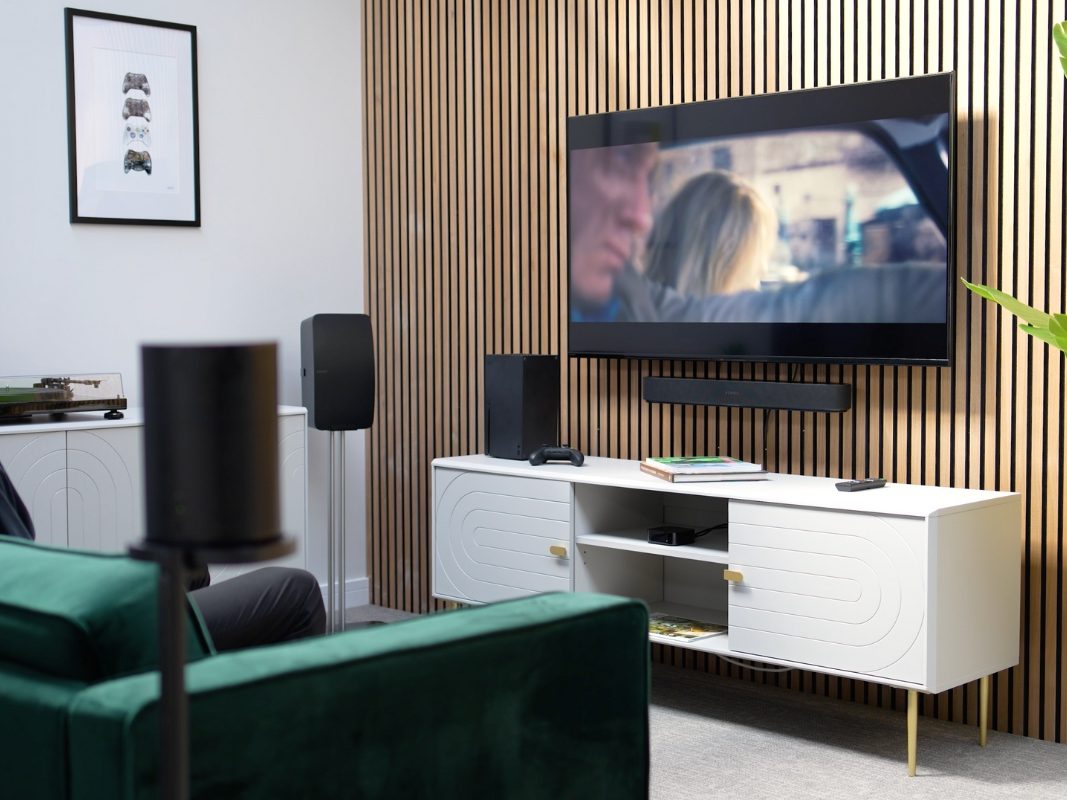
Sonos Era 100: Richer, fuller sound profile with stereo separation thanks to two angled tweeters and a 25% larger woofer.
Sonos One (Gen 2) / Sonos One SL: Mono sound, good for daily listening music but a step down in overall performance.
Extended Features:
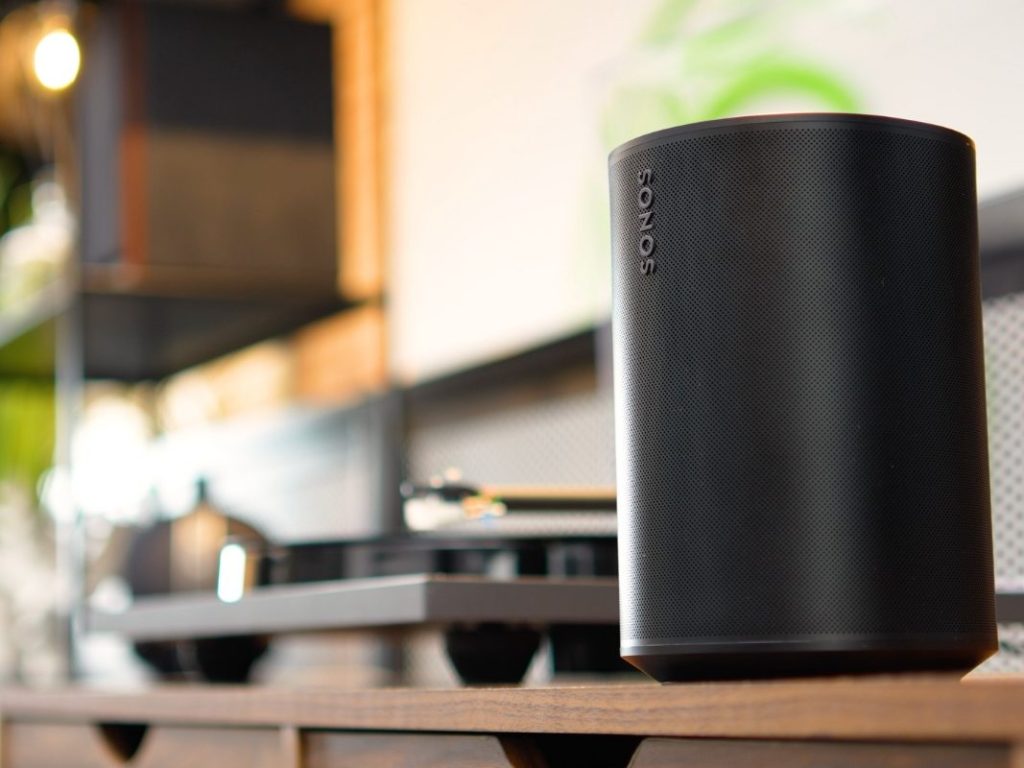
Sonos Era 100: Bluetooth 5.0, dedicated line-in for wired devices using Sonos Line-In Adapter (sold separately), Quick Tuning for Android, Trueplay for iOS, voice assistance (no Google Assistant).
Sonos One (Gen 2) / Sonos One SL: No Bluetooth or line-in; Trueplay Tuning for room tuning (iOS only). Full voice assistance (Sonos One SL lacks voice control).
Enhanced Design:
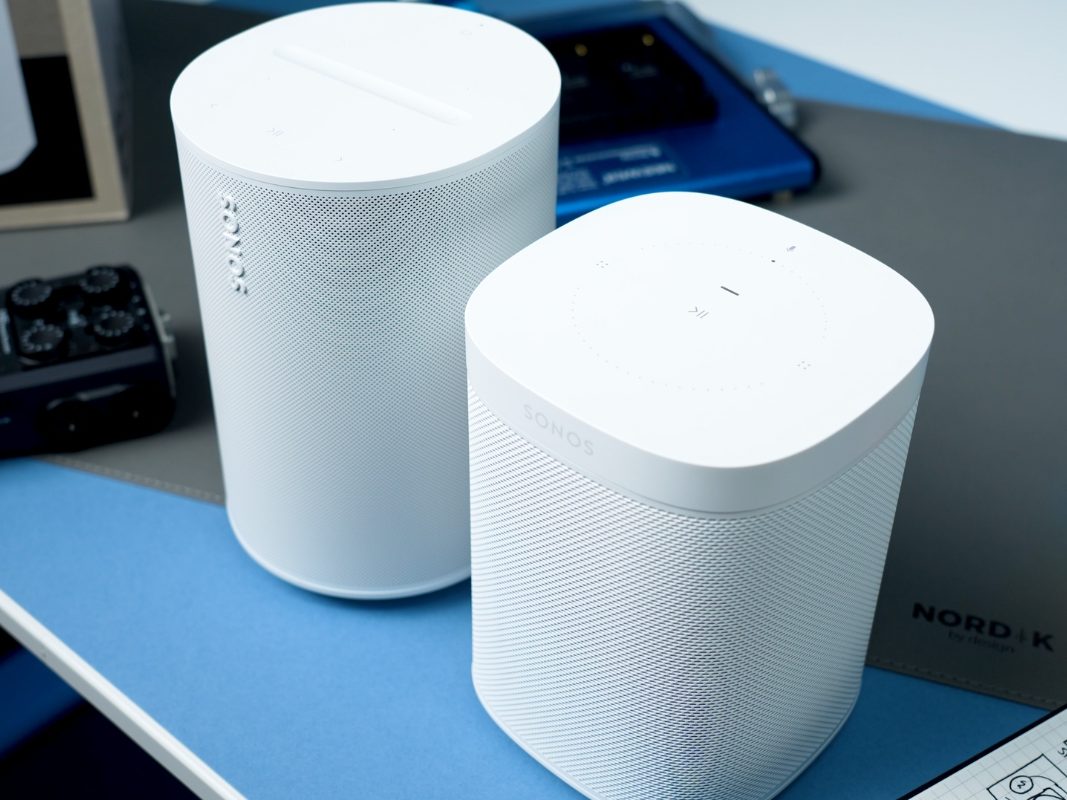
Sonos Era 100: New and improved cylindrical design and controls, perfectly matched to other new Sonos releases (Sonos Era 300, Sonos Move 2). It comes in black or white.
Sonos One (Gen 2) / Sonos One SL: Slightly more dated design. It comes in black or white.
Price:
Naturally, as a newer product, the Sonos Era 100 does boast a more expensive price tag. However, when you consider the benefits of sound performance, features and design, we would argue its worth it.
Sonos Era 100 RRP: £249
Sonos One (Gen 2) RRP: £199
Sonos One SL RRP: £179
We’ve covered all of the differences in our Sonos Era 100 Review: The Ultimate Smart Speaker video on YouTube below:
Remember, all Sonos products bought with Smart Home Sounds come complete with a FREE 6 year extended warranty, FREE delivery and with 0% finance available.
Sonos One & Sonos One SL Alternatives
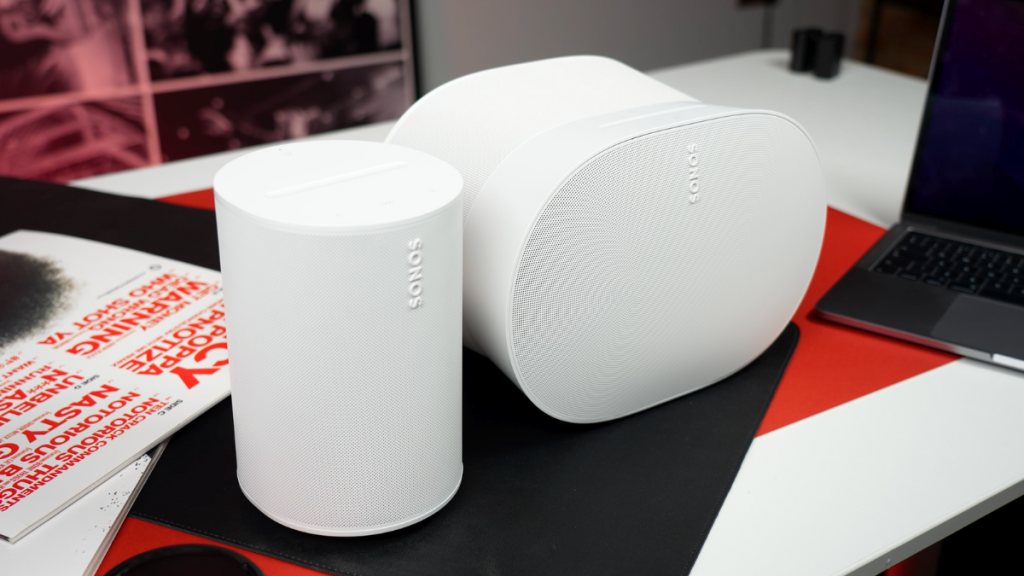
Sonos Era 300:
Priced at £449, the Sonos Era 300 introduces itself as a pioneering and premium option in the Sonos wireless speaker lineup. Thanks to its innovative driver array, the Era 300 features support for Dolby Atmos and spatial audio technology, all compactly delivered in a single unit.
Much like the Sonos Era 100, the Era 300 comes equipped with all of the same functionality, including Bluetooth 5.0, Wi-Fi 6, and the convenience of line-in connectivity through the dedicated Sonos line-in adapter.
Engineered with six drivers strategically placed to deliver sound in all directions, Sonos has designed this speaker to offer listeners an authentic and immersive experience regardless of which capacity you choose to use it in. Find out more in our dedicated Sonos Era 300 Review on YouTube.
Is The Upgrade Worth IT?
There’s no denying that the Sonos One (Gen 2) is still a brilliant speaker, and there was a reason it was so popular. Although its a shame to see it go, looking at both options side-by-side, the Sonos Era 100 offers a clear step up across the board in comparison to its predecessor.
So, if you’ve already invested in or liked the performance of the Sonos One (Gen 2) and are looking to upgrade, then we have no doubts that you’ll love the performance of the Sonos Era 100. However, if this is your first investment in the Sonos ecosystem, you really can’t go wrong with it and the Era 100 will be a great starting point in a budding Sonos home.
Other UseFul Content
Blog: The Best Sonos Speakers to Buy In 2024
Blog: Sonos Era 100 Review: Truly Impressive Stereo Sound
Blog: Sonos Era 300 vs Sonos Five: Which Premium Speaker is Best?
We hope you find this helpful, but of course, we realise that purchasing a new speaker is a big decision, so we are more than happy to assist with any queries you may have.
Please reach out on:
| info@smarthomesounds.co.uk | |
| Live Chat on our Website | |
| 0800 677 1100 |
Following the news that the Sonos One (Gen 2) and Sonos One SL are set to be discontinued, we explore what’s the next best wireless speaker option for you and your home.
Which Flagship OLED TV Is Right For You?
Despite innovation happening across the board, OLED TVs remain one of the most popular options for people looking for a new television. This year, the landscape has undergone a dramatic shift, with LG and Sony introducing groundbreaking advancements in OLED display technology. LG's flagship G3 boasts MLA (Micro Lens Array) technology, while Sony's A95L sports a second-generation QD-OLED display. But, which is the better choice for you?
Truthfully, both of these TVs are excellent performers and whichever you choose will be a top pick. Since their release, the LG G3 and the Sony A95L have rightly asserted themselves as the front-runners in the OLED TV market. However, with a £1000 difference in price, and only one top spot to be claimed, the verdict might not be as obvious as it first appears.
Throughout this blog, we will be breaking down the technical jargon to help you find out which flagship OLED TV comes out on top.
Want a more in-depth comparison? Watch our Ultimate OLED Showdown: LG G3 vs. Sony A95L on YouTube
Lg G3 vs. Sony A95l: price
Traditionally, Sony TVs tend to carry a bigger premium than LG, so naturally, we expected a higher price tag. However, due to the Sony A95L’s late 2023 release, this has compounded the price difference, leading to a much bigger disparity between the two TVs at the time of review.
For context, the 65-inch LG G3 is currently available for £2,299; the 65-inch Sony A95L meanwhile, comes in at a whopping £3,499. We’re looking at a difference of over £1000, making the A95L over 50% more expensive. In fact, you can pick up a 77-inch LG G3 for a similar price of £3,799, making this a very important factor to keep in mind.
Why buy from Smart Home Sounds?
We offer 30 Day Extended returns and Free Next Day Delivery*. Looking for more personal advice? Contact our team of experts today.
TV Technology: What's On Display?
The Sony A95L is a stunning TV that makes the most of QD-OLED technology and a second-generation Samsung-display panel, which, when you add Sony’s picture processing on top, delivers impressive colour accuracy and vibrance. It also features a heat dissipation layer enhanced by advanced thermal analysis that is powered by Sony's cognitive XR processor. This combination effectively manages heat and ensures this TV can go brighter and deliver better colour accuracy than any Sony OLED we’ve seen before.
Alternatively, LG have decided to go for a different route for their premium OLED TV and they have backed MLA (Micro Lens Array) technology in the LG G3 alongside their Alpha 9 AI Gen 6 processor. To put it simply, MLA technology maximises the brightness output of the panel without needing to use extra power. Instead, it improves the efficiency of the OLED pixels and enables the G3 to maximise its peak brightness, making this easily one of the brightest OLEDs we’ve tested to date.
Want to learn more about the technology behind the TVs? Check out our blog article MLA vs. QD-OLED: The Differences That Actually Matter
LG G3 vs Sony A95L: Design
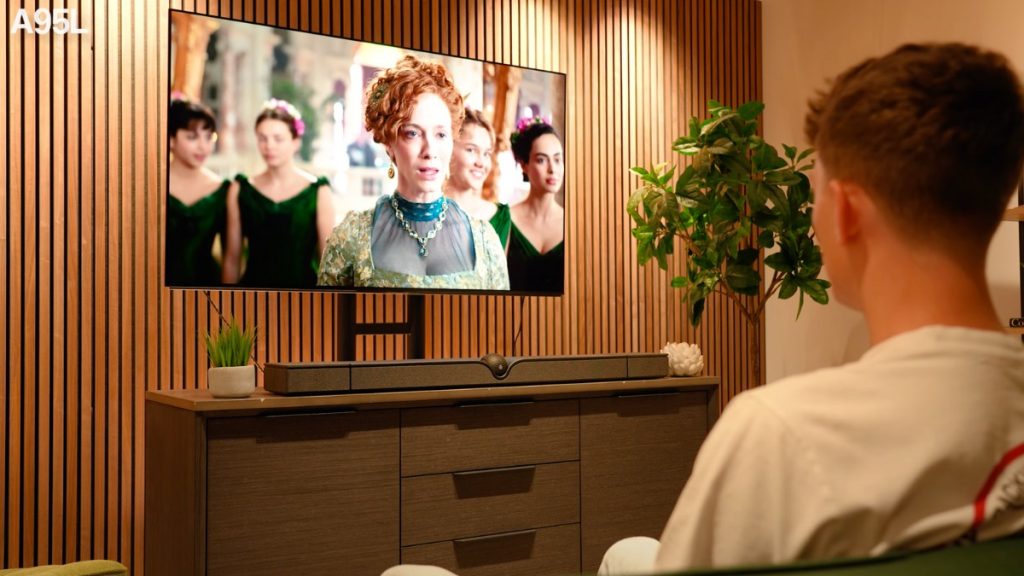
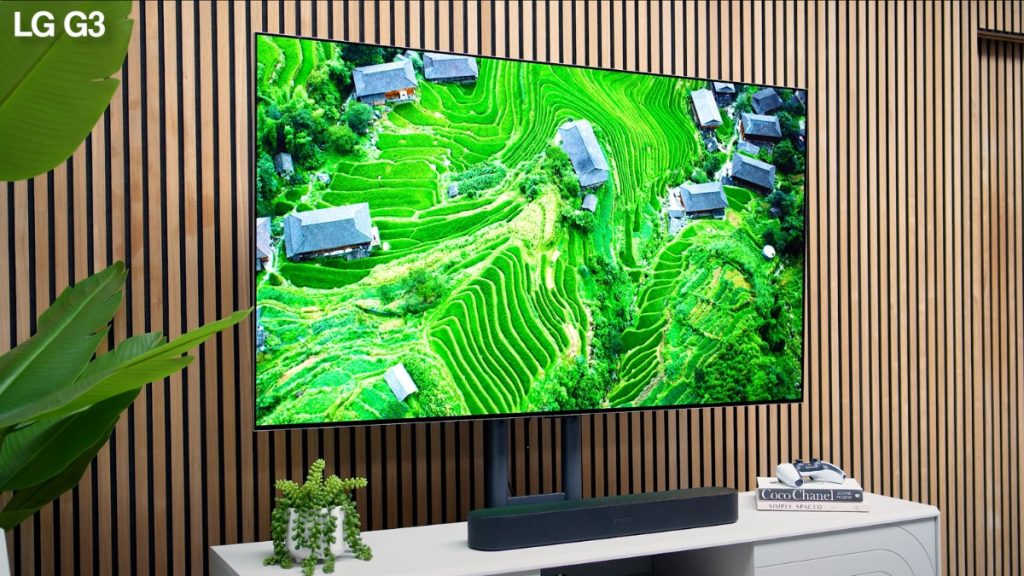
When it comes to design, its hard to argue with either of these flagship OLED models. They both feature premium materials and build quality, and they both offer an almost bezelless finish, making them a joy to have on display.
This year, Sony has thankfully ditched the not-so-practical foot design that we saw on some of their previous TVs, like the A95K. Opting for a more conventional metal foot option that’s ideal if you’re looking to place this TV on a media unit rather than a wall mount.
On the other hand, as a “gallery” TV, the LG G3 has primarily been designed to be wall-mounted and sit flush with your wall to give a picture frame-style finish. Because of this, there is no stand supplied in the box, only a wall mount. There is a pedestal stand available, but that comes with an additional £150 cost, which is a slight frustration of ours.
In terms of controls, the A95L also comes with a premium backlit remote, whereas the team at LG has continued to back their Magic Remote. No, it’s not our favourite option by any stretch, and it doesn’t fit the sleek styling of the G3, but as frequent Apple TV users, we can just about get over it.
LG G3 vs Sony A95L: Picture Quality
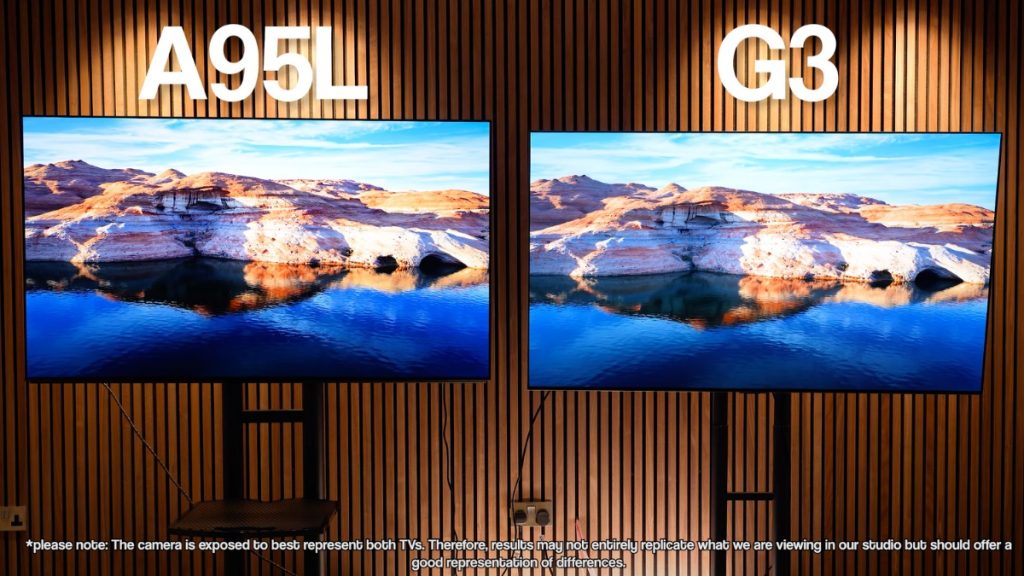
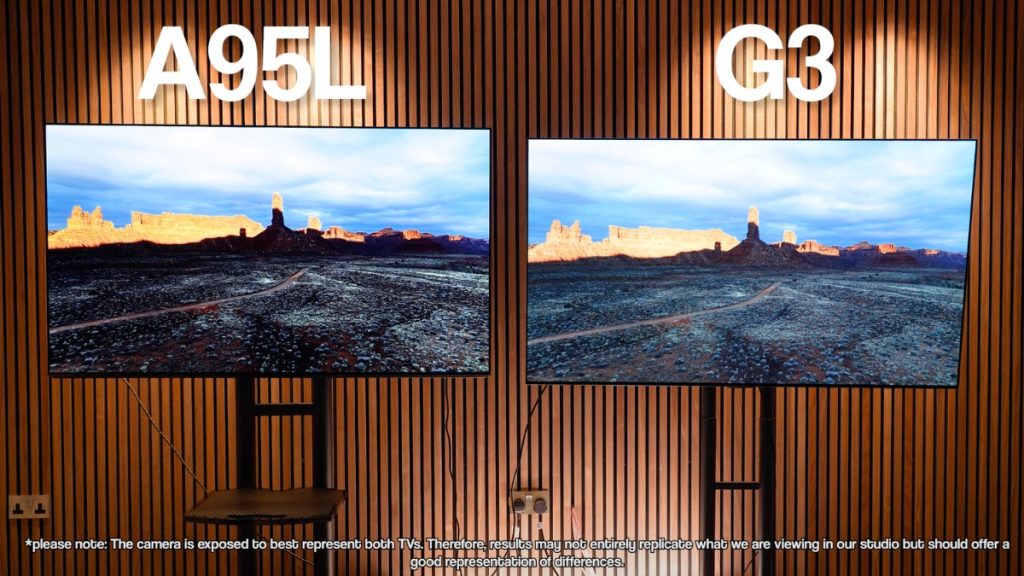
There’s no doubt both the LG G3 and the Sony A95L deliver on their respective promises of stunning brightness and true-to-life colour accuracy. From our rigorous testing, its clear that these are two of the front-runners in the OLED market.
Having spent multiple weeks testing these two models side-by-side, we’ve been able to highlight our key strengths and weaknesses (or lack thereof) when it comes down to picture quality:
| Sony A95L Strengths | LG G3 Strengths |
| ✅ Impressive colour accuracy and realistic skin tones | ✅ Typically produces a brighter image |
| ✅ Convincing dynamic range with deep blacks and bright highlights. | ✅ More visible detail in darker scenes |
| ✅ Overall more detailed picture | ✅ Brighter whites |
| ✅ Improved performance for 4K upscaling | ✅ Impressive motion handling—perfect for sports |
| ✅ Better performance right out of the box | ✅ Greater pound for pound performance |
| ✅ Excellent image processing & upscaling | ✅ Handles reflections better |
| ✅ Great for off-axis viewing | ✅ Great for off-axis viewing |
| Sony A95L Weaknesses | LG G3 Weaknesses |
| ❌ Premium price may outweigh its benefits for some. | ❌ Requires calibration for true realism and true-to-life colour accuracy |
| ❌ Colours can lose saturation in brighter scenes |
💡Note: While we tested both TVs primarily in their standard modes, the Sony A95L excels in this setting, delivering exceptional performance without adjustments. On the other hand, as highlighted in our full review, the LG G3 benefits from fine-tuning to reach its full potential, but it is capable of replicating a similar picture as the A95L.
Want to see these TVs in action? Watch the Ultimate OLED Showdown: LG G3 vs. Sony A95L on YouTube
LG G3 vs Sony A95L: GamiNG Performance
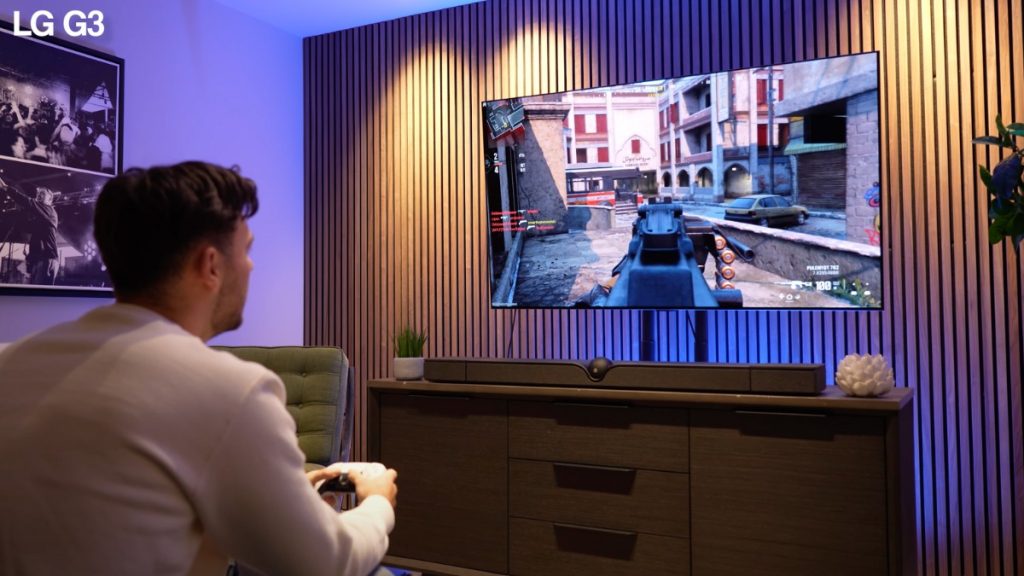
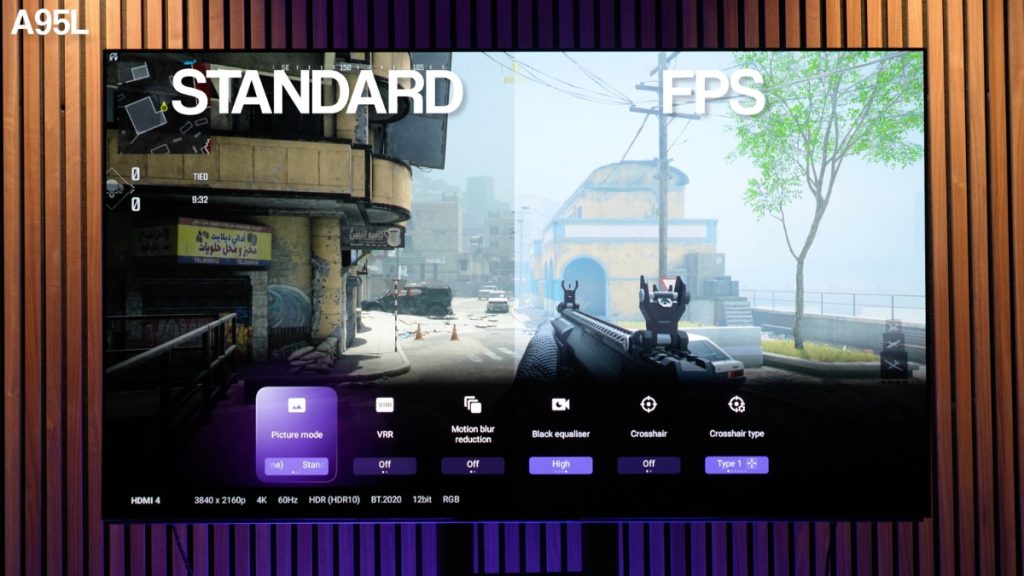
| Sony A95L | LG G3 | |
| Refresh Rate | 120 Hz | 120 Hz |
| Resolution | 4K | 4K |
| HDMI Connections | HDMI 2.1 x 2 (eARC compatible x1) / HDMI 2.0 x 2 | HDMI 2.1 x 4 (eARC compatible x1) |
| Gaming Features | VRR / ALLM / HDR game mode / Black Equaliser | Nvidia G-Sync / AMD FreeSync / Game Optimiser / HDR game mode / VRR / ALLM / QMS |
While we get four HDMI 2.1 ports on the G3 with full 4K/120 Hz support, the A95L only offers 2.1 support on two of its four HDMI connections (with one of those being an eARC port) which could prove annoying if you’re someone with two consoles and an Atmos soundbar, for example.
Besides that, both are very solid options for gaming, with support for 4K/120Hz, ALLM and VRR. When it comes to input lag, the Sony (in game mode) comes in at 8.5 m/s for 4K at 120 Hz, whereas the G3 is around 5.5 m/s in game optimizer and boost mode.
The A95L offers a visually immersive experience, and the very low input lag makes for competitive FPS gameplay. The additional picture modes in the “game” picture mode settings also help to take the performance to the next level. We were particularly big fans of the vibrant, true-to-life colours, rich but well-balanced contrast levels, and fantastic dynamic range that enriched the overall visual performance.
Testing on the LG G3 was also thoroughly enjoyable. It felt very responsive, and the menu’s offer plenty of detail with lots of customisation options available. The G3’s ‘Game Mode’ does seem to reduce the HDR brightness, but it doesn’t really make much of an impact as the TV is so bright anyway.
As expected, the brightness levels are very impressive, helping you see what’s going on in darker scenes with no crushing blacks. Combine this with all of the customisations available to fine-tune the viewing experience to suit you, and again, you’re left with another very capable gaming TV.
Truthfully, both the LG G3 and Sony A95L are brilliant options for gaming. Besides the number of HDMI 2.1 ports, there’s not a lot to pick them apart, and whichever you choose will be more than qualified to deliver a first-class gaming experience.
LG G3 Vs Sony A95L: Audio Performance
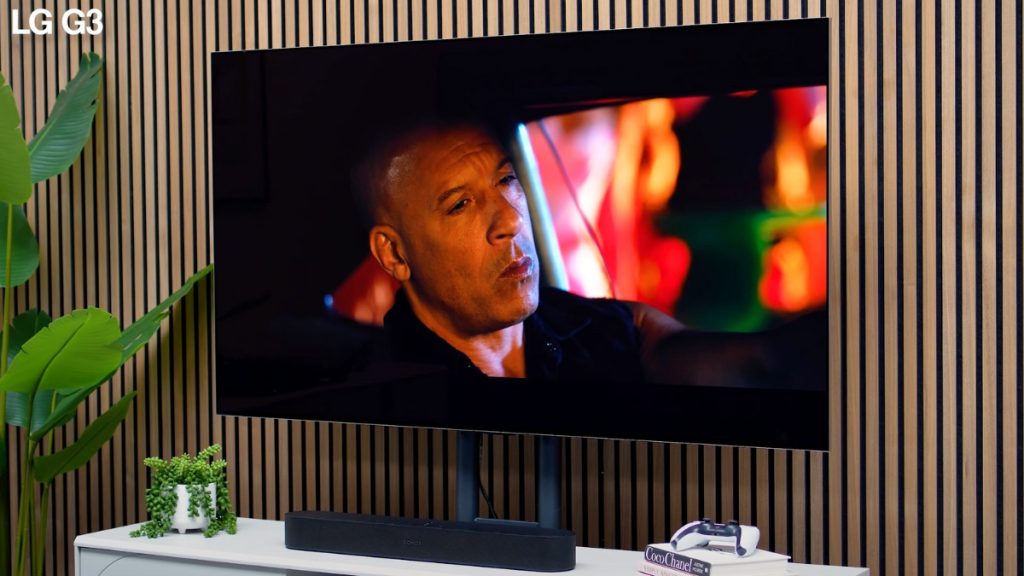
Generally speaking, sound and TVs is a contentious topic, especially when you're investing this much money in a premium model. On one hand, if you can afford these TVs, you likely have a separate audio system, making the built-in speakers feel somewhat irrelevant. However, on the other hand, for the price you pay, you'd expect these TVs to deliver impressive sound that can complement the visuals.
When it comes to audio performance, the A95L clearly outshines its counterpart in terms of sound quality. The A95L offers the best sound we've heard from TV speakers alone. While it's not convincing enough to make us ditch our home audio setup anytime soon, it's surprisingly punchy and delivers impressive clarity that complements the visual performance.
Unfortunately, the same can't be said for the LG G3 as it falls slightly short in this department. We were a little disappointed by the overall sound performance, finding it underwhelming in terms of both bass and vocal clarity. That being said, this isn’t anything a good soundbar can’t fix, so whether you factor this into your decision making process is down to personal preference.
Our Verdict
Despite both of these TVs gunning for the title of best OLED TV, there is a big difference in price, which can't be understated in any comparison between the two.
Based on picture quality alone, the A95L is our preferred choice with its more detailed, true-to-life picture accuracy. However, the G3 is still an exceptional performer that will undoubtedly tick the right boxes for a lot of people and its bright picture and more affordable price point does make it feel like a steal in comparison.
If we had to call it, although the A95L is the better visual performer, considering the 50% increase in price, there is categorically not a 50% increase in performance. The A95L was released more recently though, so we would expect it to drop in price and bring the two closer in the future which is something to remember.
As of right now, the LG G3 offers far greater value for money, even though the A95L wins based on performance. Whether the Sony is worth the premium price tag is another question that solely depends on your personal preference and how much you value having “the best” when it comes to image accuracy.
Ultimately, neither of these TVs will be perfect for everybody, but both will be perfect for somebody. Regardless of which side of the fence you sit on, we’ve got two incredible TVs on our hands, which can only mean good things for us moving forward.
Other UseFul Content
Video: LG G3 MLA OLED Review: Massively Overrated or Worth the Hype?
Video: How To Choose The Right TV Screen Size
Blog: MLA vs. QD-OLED: Everything You Need To Know
Blog: Full-Array LED vs OLED: The Differences that Actually Matter
Blog: LED vs OLED vs QLED - What do they mean and which is right for me?
We hope you find this helpful, but of course, we realise that purchasing a new TV is a big decision, so we are more than happy to assist with any queries you may have.
Please reach out on:
| info@smarthomesounds.co.uk | |
| Live Chat on our Website | |
| 0800 677 1100 |
In the battle for OLED supremacy, we put the LG G3 and Sony A95L head-to-head to find which TV is perfect for your space.
MLA OLED vs. QD-OLED: What’s the Difference?
If you’re on the hunt for a new OLED TV, you might have heard about MLA and QD-OLED technology as the new leading technology for these models.
With TV manufacturers constantly trying to push the boundaries of OLED TVs, we’ve been left with a myriad of technological terms that can often feel very overwhelming to get to grips with. Leaving you wondering what does it all mean? And does it even matter?
Well for those looking to find the perfect TV for their home, the differences can make a big difference in which model you should go for. Whether you’re interested in the Sony A95L (QD-OLED), Samsung S95C (QD-OLED), LG G3 (MLA) or Panasonic MZ2000 (MLA) for example, you’ll struggle to find the best option without knowing the difference between the technology types.
While both MLA and QD-OLED share the common goal of enhancing OLED visual performance, throughout this blog, we’ll be breaking down the pros and cons of both technologies to help you find the best option for your home.
For this comparison, we will be using the LG G3 (MLA OLED) and the Sony Bravia XR A95L (QD-OLED) as examples. We highlighted both as the best OLED TV’s on the market right now in our review. Therefore, making these best references to see MLA vs. OLED technology in all of their glory.
Want a more in-depth comparison? Watch our LG G3 vs. Sony A95L Review on YouTube
💡 Useful Note: When talking about LG Display Technology and MLA, you may see the name META come up too. This essentially refers to the brand's META booster algorithm, which also helps to ensure peak performance. To avoid any confusion, just know they cover the same ground when it comes to TV displays.
What Is MLA and QD-OLED?
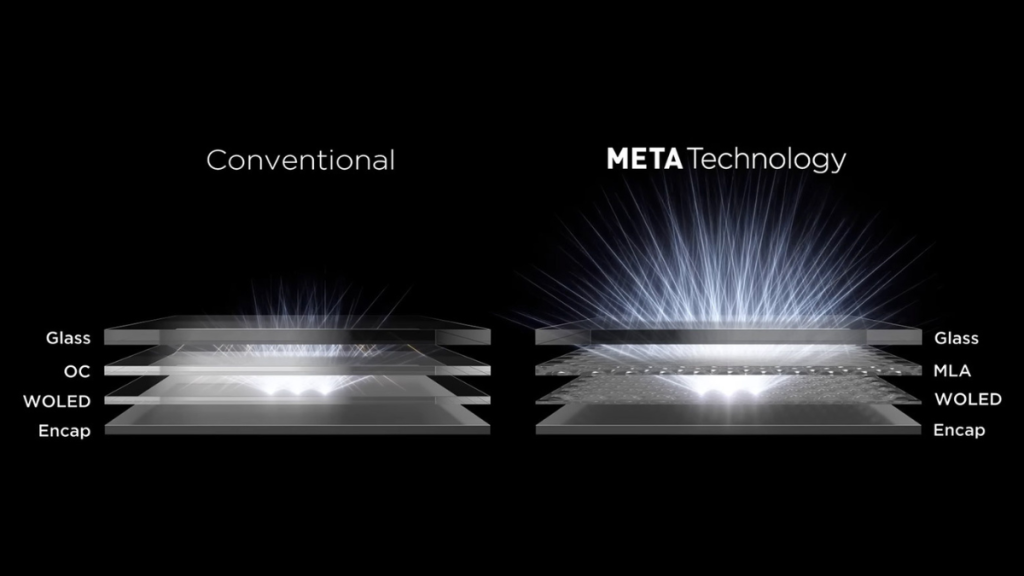
MLA OLED:
MLA (Micro Lens Array) is a new technology that has been developed to improve the visual performance of traditional OLED screens.
MLA works similarly to WOLED TVs; however, it adds an additional layer of microscopic lenses on top of the OLED subpixels to maximise the efficiency of those pixels.
How? The additional layer reduces the amount of brightness lost through internal reflections in a regular OLED TV, instead taking the light and helping to direct it outwards.
This improves brightness levels, creates a more vivid image and improves viewing angles all without requiring any additional power.
Given that traditional OLEDs tend to suffer in the brightness department, MLA’s ability to go beyond 2000 nits of brightness is astounding and solidifies its place as a game-changer within the OLED category as a whole.
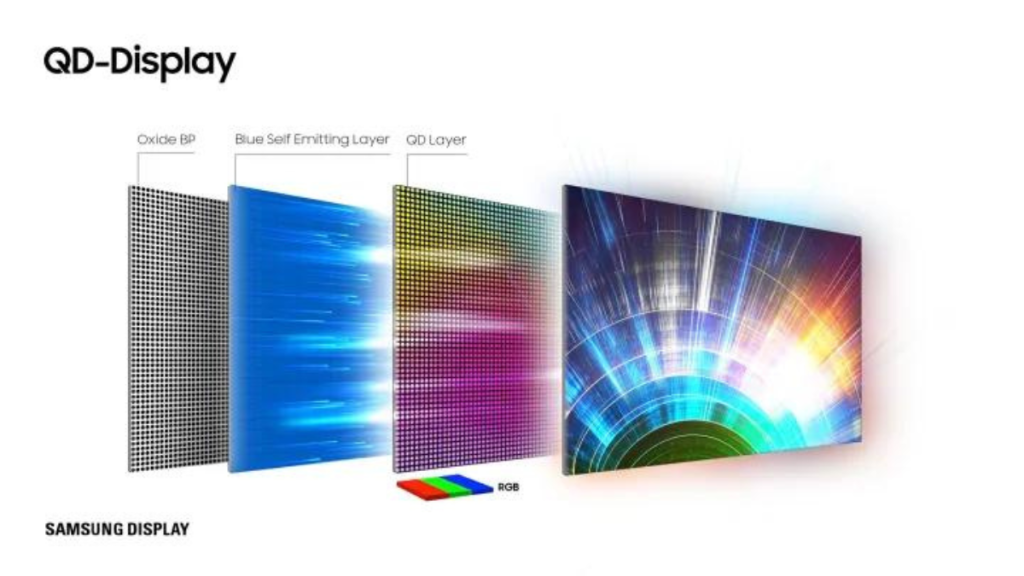
QD-OLED:
QD-OLED is a Samsung Display-manufactured technology that bridges the gap between Quantum Dot and OLED technology.
It’s a slightly more recognisable form of OLED display technology that’s been featured in 2022 TV models from a variety of different brands, like the Sony A95K and Samsung S95B.
QD-OLED displays utilise a Quantum Dot filter to enhance the overall colour accuracy and brightness of your TV.
How does it do this? Well, QD-OLED TVs start with a bright blue LED light source. They then use red and green quantum dots to balance the blue into a complete white spectrum.
This white light then passes through an LCD matrix and a colour filter, which adjusts the light to produce a truer and more precise representation of the colour that’s needed on screen. Pretty neat, right?
LG G3 vs. Sony A95L
Strengths & Weaknesses at a Glance
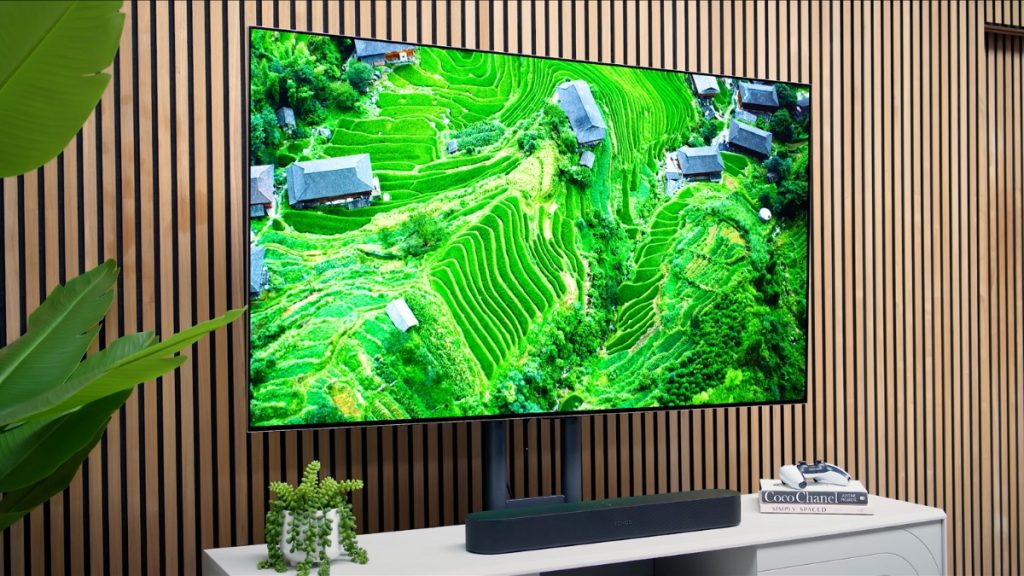
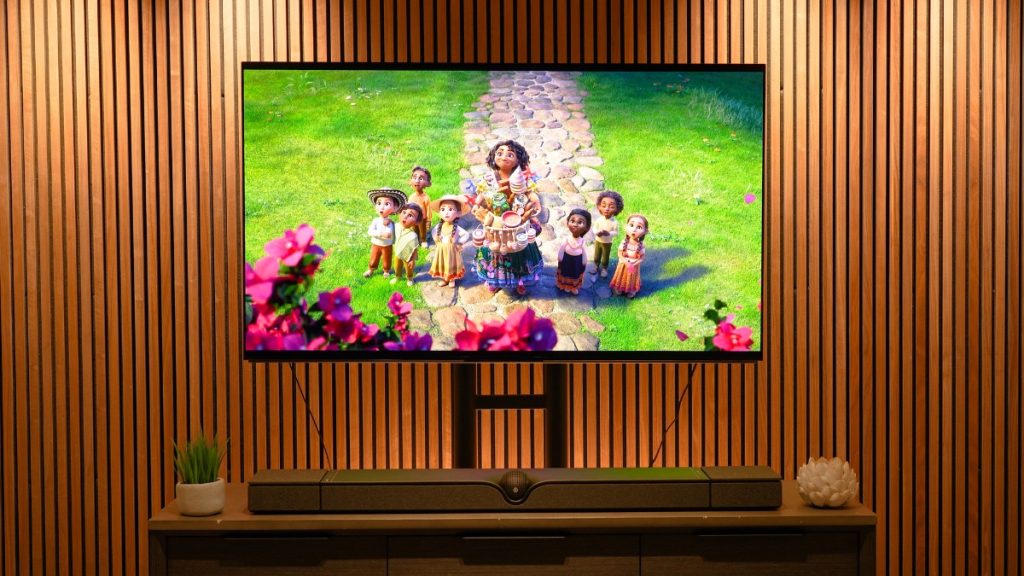
| LG G3 (MLA OLED) Strengths | Sony A95L (QD-OLED) Strengths |
| ✅ Typically produces a brighter image | ✅ Enhanced colour fidelity and vibrancy |
| ✅ More visible detail in darker scenes | ✅ Optimised balance and overall contrast |
| ✅ More affordable and wider range of sizes | ✅ Truer shadows and pure, inky blacks |
| ✅ 4x 4K/120hz HDMI ports | ✅ More accurate highlights |
| ✅ Greater pound for pound performance | ✅ Improved performance for 4K upscaling |
| LG G3 (MLA OLED) Weaknesses | Sony A95L (QD-OLED) Weaknesses |
| ❌ Requires calibration for true realism and true-to-life colour accuracy | ❌ More expensive and fewer choices of sizes (only available in 55”, 65” & 77”) |
| ❌ Colours can lose saturation in brighter scenes | ❌ Only 2x 4k/120Hz HDMI 2.1 ports |
| ❌ Stand mount sold separately |
More: LG G3 MLA OLED: The Hype is Real...
More: Sony TV 2023 Buying Guide: What's Right For You?
What About WOLED?
You may have also seen the term ‘WOLED’ floating around the OLED market too. To keep things brief, WOLED panels take the makeup of a traditional OLED panel (with red, green and blue oled pixels) and add another white subpixel into the mix.
This acts to reduce the OLEDs tendency to suffer from burn-in considerably. However, it doesn’t match the efforts of MLA or QD-OLED technology when it comes to brightness and colour accuracy.
It’s still a step up from traditional (RGB) OLED, hence why the likes of Sony, LG and Samsung are opting for it in their mid-tiered OLED TV’s. But it’s just not quite as effective as their more premium (and more expensive) counterparts.
Verdict
There’s no denying that OLED technology has come a long way in recent times, and this year has been as transformative as any for TV manufacturers.
While there’s no “true” winner when it comes to MLA vs. QD-OLED, both are considerably better visually than the conventional OLED and WOLED displays that we’ve grown accustomed to.
For us, MLA is leading the charge for OLED brightness while QD-OLED holds the position for best colour accuracy and vibrancy. The LG G3 and Sony A95L are both the best OLED TVs we've tested to date. For those looking for the brightest TV and have a tighter budget, then the G3 might be the best option for you. But for those after the most true-to-life picture quality with great contrast and colour accuracy, then the A95L might be worth the extra budget.
If you'd like any more information about anything that's been discussed, please reach out to info@smarthomesounds.co.uk, via Live Chat on our website or on 0800 677 1100 where one of our expert advisors will be happy to help.
Other USeFul Content
For more information about screen types and TV technology, please take a look at our TV Buying Guide.
More On TV Tech:
>> Full-Array LED vs. OLED: The Differences That Actually Matter
>> LED vs. OLED vs. QLED - What Do They All Mean and Which Is Right for Me?
>> Mini LED vs OLED vs Micro LED: Pick Your Perfect TV Panel
>> QLED vs OLED: The Differences That Actually Matter
Helpful content:
Video: How To Choose The Right TV Screen Size
Video: Sony A80L: The Ultimate All-Rounder OLED
Video: LG C3 vs. Sony A90K: Don't Make The Wrong Choice
Curious about the difference between the flagship OLED displays from the likes of Sony, LG, Samsung and more? Break down the technical jargon with us in this handy blog.
That’s right, Black Friday Deals 2024 are here, and like always, there’s a wide range of great TV deals that you’d be silly not to make the most of! With early offers and sales events already in full flow, you can expect big discounts on everything from cosy 32-inch models perfect for the bedroom to mammoth 75-inch TV’s ideal for taking your home cinema to the next level.
We've done the research and compiled a list of the 10 best TV deals from top TV brands, Sony, LG, and Samsung that you can get on sale this Black Friday. Whether you're looking for a premium OLED, QLED, Mini LED, a budget-friendly LED option, or something else, we have something here for everyone. And with huge savings to be made, you're sure to find the perfect TV for your home at the best possible price.
Not only that, at Smart Home Sounds, we’ll provide you with expert advice and service too, so you can buy with confidence with our Lowest Price Promise, with selected TVs coming with a FREE 5-year extended warranty and FREE delivery, with 0% finance available to spread your payments.
Beyond the amazing TV deals, you might also discover additional perks when you purchase from us. Keep an eye out on the product pages to uncover more potential benefits like soundbar discounts, complimentary subscriptions, and much more!
| Black Friday Price Lock Promise 🔐 Worried prices might go down more over the big weekend? At Smart Home Sounds, we’re offering a Price Lock Promise so you can shop with confidence and secure your stock early! If we drop our prices between now and November 27th, simply get in touch and we’ll refund you the difference. It’s that simple! T&Cs apply. |
Shop By Screen Size
Best Small Screen TV Deals:
Sony Bravia W800 LED TV (32-inch)
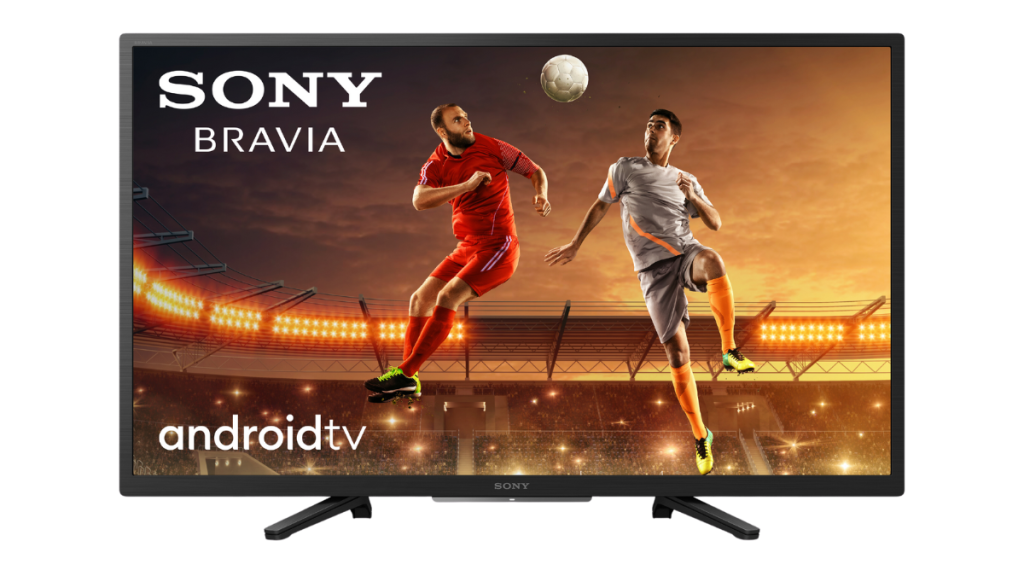
Was £449 NOW £298 at Smart Home Sounds
The Sony Bravia W800 is our favourite 32-inch LED TV, and now available for under £300 over Black Friday, it’s a brilliant solution if you’re after a high-performing smart TV for the smaller spaces in your home.
Yes, you'll miss out on some of the top-end features that you’d find on the larger models on this list with this TV. However, some people aren’t in the market for a premium screen adorned with all the tech specs known-to-mankind. This TV offers both reliable small screen performance and good value for money, which for the right person, will be more than enough.
LG C3 4K OLED TV (48-inch)
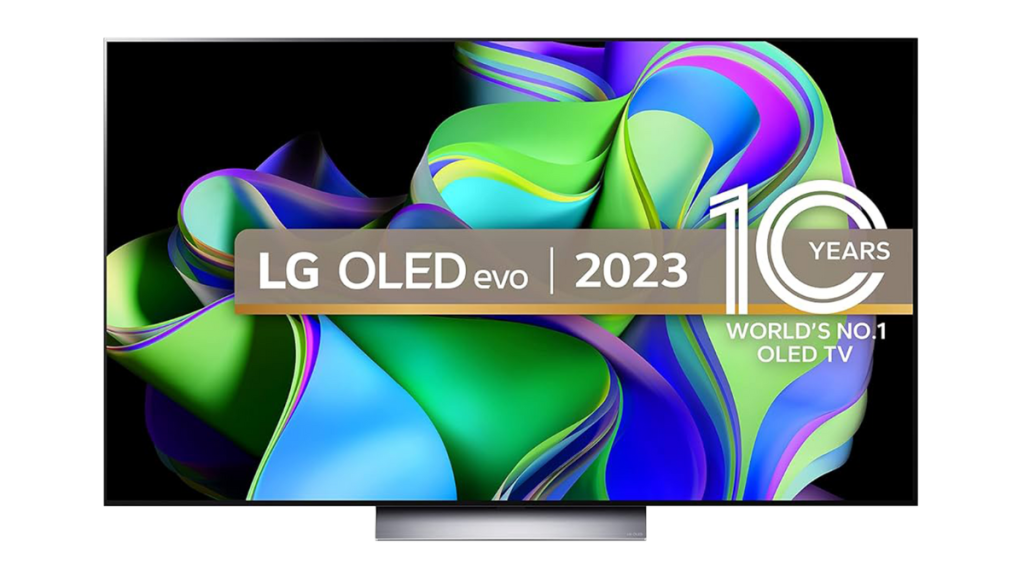
Was £1,599 NOW £1,095 at Smart Home Sounds
Perfect for almost every occasion, the LG C3 combines everything you’d need from a top performing OLED TV. Featuring improved picture processing over its popular predecessor (the LG C2), an enhanced Smart UI, and a host of features that will impress both film fanatics and gamers alike, not to mention its availability in a vast range of sizes too.
The LG C3 is an ideal choice for almost any environment or occasion. And with a saving just shy of £500 on the 48-inch variant, this model is almost impossible to ignore.
This is the best value we’ve seen for this TV since Prime Day, making this a great time to buy one of our favourite TV’s of the year. If you’re looking for a premium OLED TV with all the bells and whistles that come with that, the LG C3 should definitely be on your radar.
It’s worth noting that the LG C3 is also well discounted across all sizes, so if you’re set on the C3 but looking for a different size, you can still make some great savings:
| See Latest Deals: LG 42-inch C3 OLED TV: Was LG 55-inch C3 OLED TV: Was LG 65-inch C3 OLED TV: Was LG 77-inch C3 OLED TV: Was LG 83-inch C3 OLED TV: Was |
Best Mid-Sized TV Deals:
Samsung S90C 4K QD-OLED TV (55-inch)
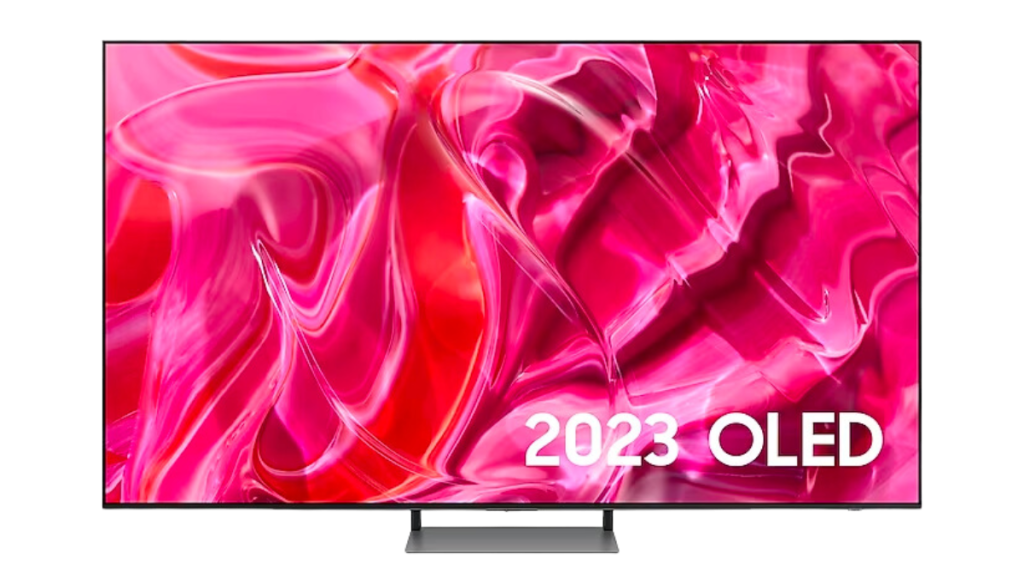
Was £1.499 NOW £1,199 at Smart Home Sounds (When using available promo code)
The Samsung S90C has been designed to offer Samsung’s QD-OLED technology at a more affordable price point than its flagship counterpart, the Samsung S95C.
Despite not offering the same outright brightness as the S95C, this TV is far from second-rate and still offers a stunningly bright and rich picture that you’re bound to love. You can also expect impressive processing, excellent gaming support and a stylish design, making this a great all-rounder for every type of your entertainment.
The S90C was already a good value option if you were looking to maximise your high-end budget. But the fact you can now currently save up to £300 and make the most of the current £100 cashback offer available on our website (see full T&Cs) makes it feel like a no-brainer.
LG G3 4K OLED TV (55-inch)
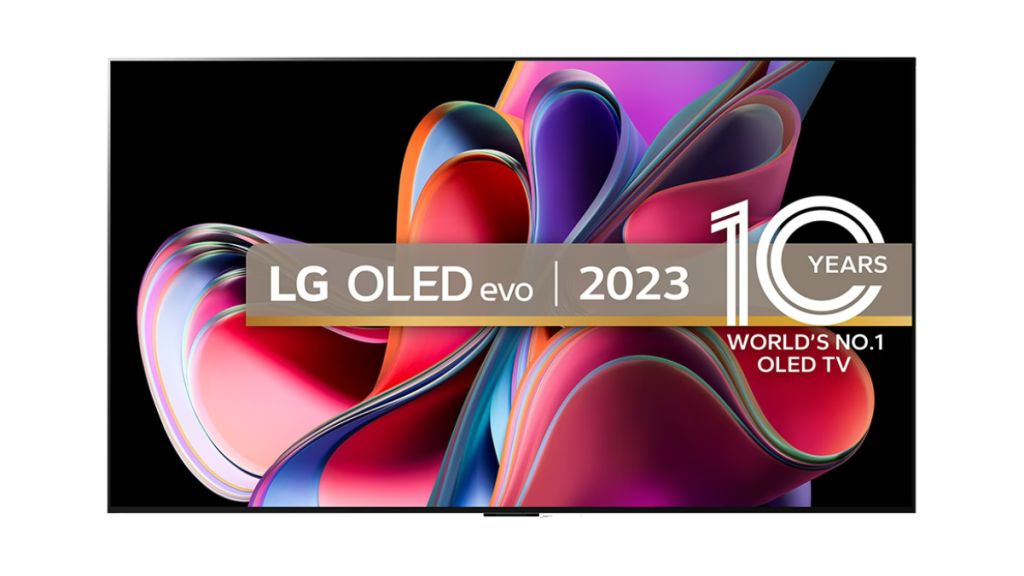
Was £2,599 NOW £1,579 at Smart Home Sounds
LG’s flagship OLED Evo TV combines sleek design, stunning colour accuracy, pixel perfect detail and superior contrast to deliver a truly cinematic viewing experience that warrants its flagship price tag.
Throughout our LG G3 review, we marked this TV as one of the best OLEDs on the market right now, and thanks to some brilliant Black Friday discounts this year, the G3 is now ridiculously well-priced considering its performance level.
If you’re the type of person who’s looking for the best of the best, this is definitely one to watch. However, you might want to act quickly; we’re expecting this one to fly off the shelves.
Video: LG G3 Review: Massively Overrated or Worth the Hype?
Sony X90l Bravia XR Full Array LED TV (55-Inch)
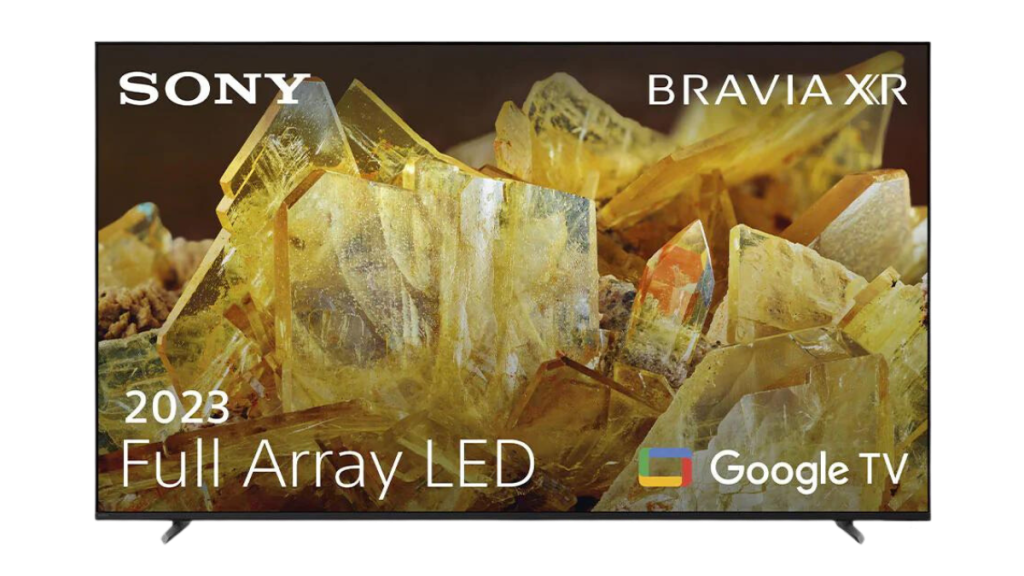
Was £1,599 NOW £1,099 at Smart Home Sounds (Includes 5 Year Extended Warranty)
As far as Sony TV’s go, the Sony X90L offers the sweet spot for performance and value for money and is perfect for those looking for a bright and high-performing TV at a more reasonable price point. It’s wide range of sizes also means that this TV is a great way to access premium performance on a large screen, much more affordably.
We highlighted this TV as a bit of a hidden-gem in our review. Feauturing Sony's Full-Array technology, this TV isn’t quite as cinematic as the OLEDs we’ve seen throughout this list, but its still a brilliant all-round performer with brightness levels higher than those of traditional OLEDs, making it a great choice for rooms with lots of natural light.
There’s a lot of competition for bright TVs at the moment, but with that extra £500 saving, this one feels like a serious contender for your shortlist.
Video: Sony X90L Bravia XR TV: A Smart Choice In 2023?
Sony A95L Bravia XR QD-OLED TV (55-inch)
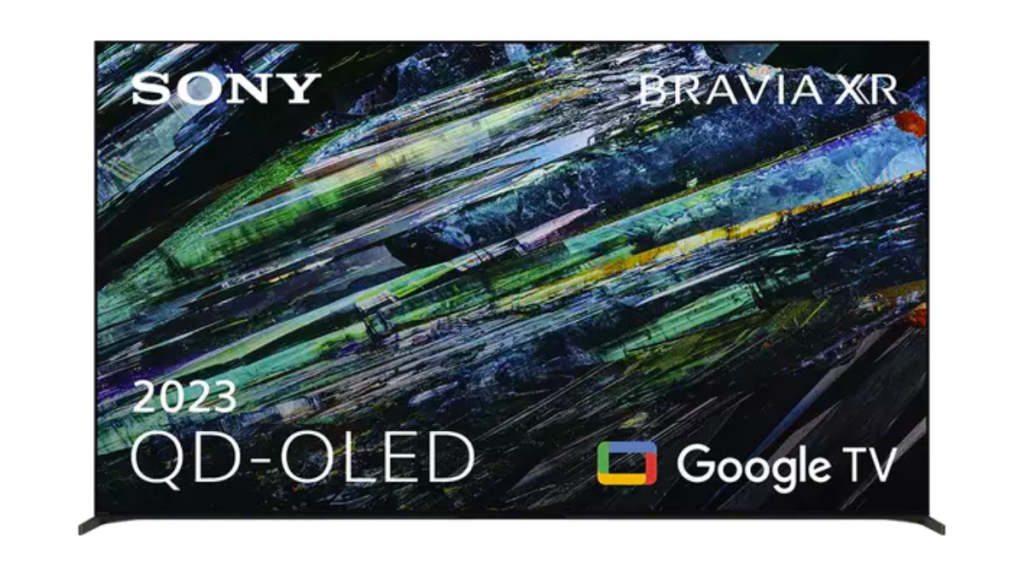
Was £2,999 NOW £2,699 at Smart Home Sounds
Not what we’d necessarily classify as an affordable TV, but this is arguably the best OLED TV available right now, and the early price drop (so soon after being released for general sale) makes the 55-inch Sony A95L a great deal that’s definitely worth considering.
As Sony’s flagship OLED model, the A95L delivers deep inky blacks, bright whites, stunning colour reproduction and all of the connectivity and smarts that you’d expect from the best of the best. No, it won’t be for everybody, but if you want a TV that will get people talking, this is one to consider.
Samsung QN85C Neo-QLED TV (55-inch)
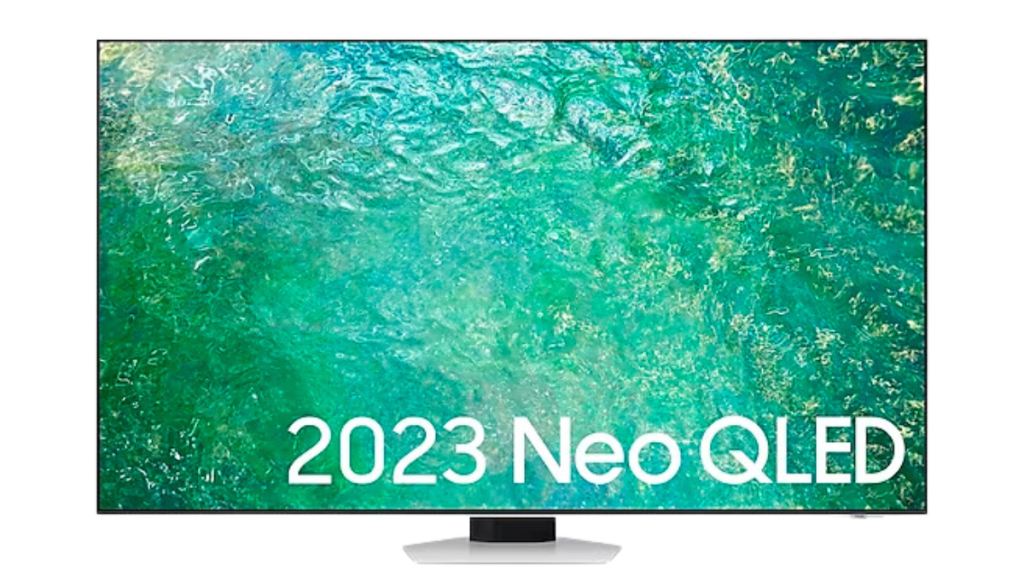
Was £1,199 NOW £898 at Smart Home Sounds
The Samsung QN85C is the entry-level Neo QLED TV in the Samsung range. Built to deliver bright Mini-LED technology at a more affordable price, the QN85C was already a good value proposition. However, now sitting well under the £1000 mark, there’s no doubt this is one of the best deals offer this Black Friday.
Featuring brilliant contrast, four HDMI 2.1 ports, and more, the QN85C is super-versatile and a brilliant choice for movies and gaming. The competition in this field is tight, but at this cut price, the QN85C easily wins our choice as the best sub-£1000 TV this Black Friday.
Note: This TV also comes with 6 months FREE Disney+ and up to 50% off selected Samsung soundbars when bought with this TV from us.
Best Big Screen TV Deals:
Sony A80L Bravia XR OLED 4K TV (65-inch)
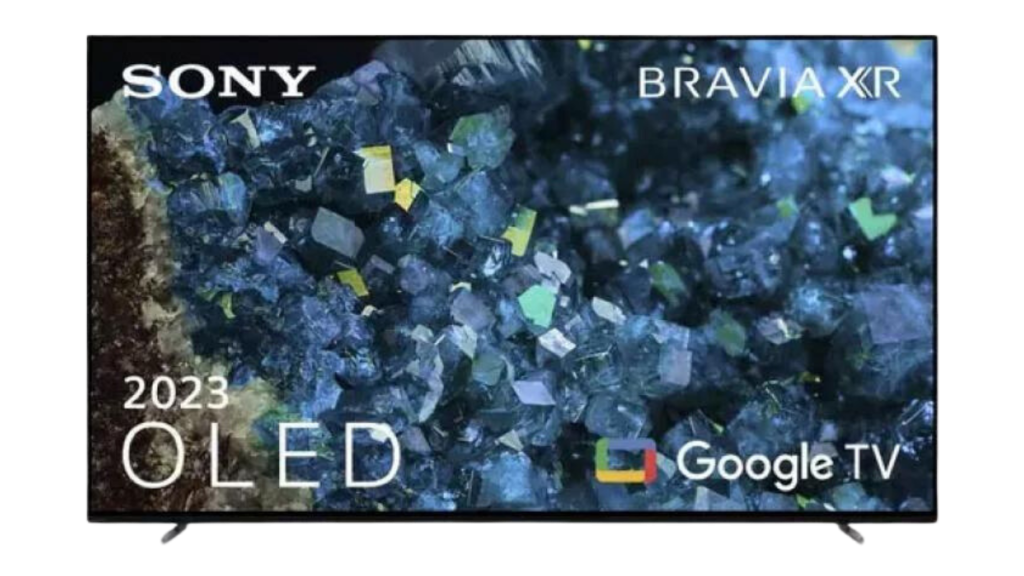
Was £2,999 NOW £1,899 at Smart Home Sounds
Awarded the “Best Premium 55-inch and Larger TV” at the What Hi-Fi Awards 2023, the Sony A80L is easily one of the best OLEDs when it comes to value for money (by Sony’s standards, that is).
Sony TV’s inherently don't come cheap, and this one is no different. Even after big discounts this Black Friday, the A80L will still be a considerable investment. However, in our opinion, what this TV delivers in terms of performance is well worth it, especially with that sub-£2,000 price tag.
Boasting impressive black levels, rich and authentic colours, and stunning depth and details, this TV is the perfect example of what we’d define as a truly cinematic performer. Like many of this year’s Sony TV's, it’s also optimised for the PS5, making this a smart choice for console gamers as well as film and TV lovers.
More: Sony A80L Review: The Smart OLED Choice?
LG QNED81 QNED TV (75-inch)
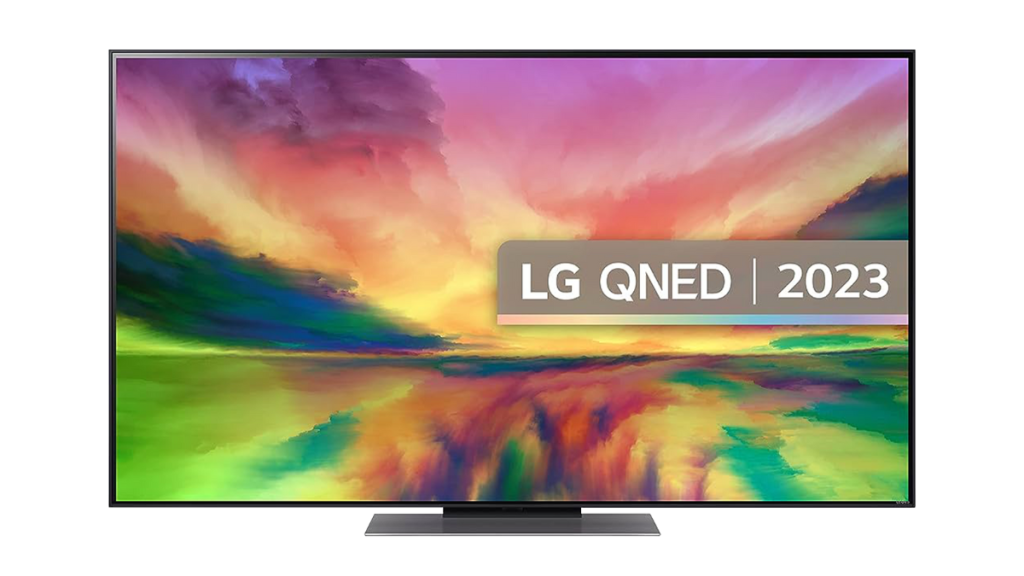
Was £2,399 NOW £1,449 at Smart Home Sounds
A great alternative to OLED, LG’s take on Mini-LED combines NanoCell and Quantum Dot technology to deliver rich and accurate colours and brightness that you wouldn’t get with traditional OLED TV’s.
Available for well under £2000 this Black Friday, the LG QNED81 has dropped to one of the lowest prices we’ve seen. So, if you’re on the hunt for a great value large-screen TV that’s ideal for viewing in brighter rooms, this is one worth taking a look at.
Sony X75WL Bravia LED TV (65-inch)
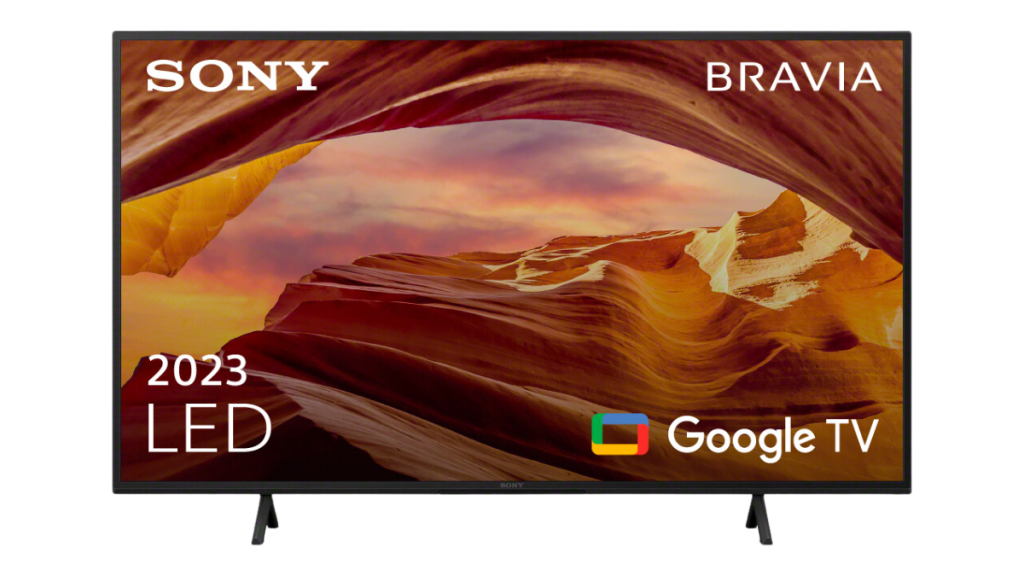
Was £1,199 NOW £849 at Smart Home Sounds
When it comes to TVs, although innovative technology is great, sometimes it's the size that matters most. Traditionally, the bigger you go, the more you pay.
So, considering the Sony X75WL is available for under £1000 in the 65-inch variant, we think this TV will be a great option for those of you who are all about big-screens and care less about the tech inside. This TV isn’t a slouch when it comes to performance. Powered by Sony’s 4K Processor X1, this 4K LED model provides sharp details, great contrast and brightness for an immersive viewing experience that everyone in the family will enjoy.
Other Useful Content
Video: Sony TV 2023 Buying Guide: What's Right For You?
Video: How To Choose The Right TV Screen Size
Video: LG C3 vs. Sony A90K: Don't Make The Wrong Choice
We hope you found this helpful, but of course, we realise that purchasing a new TV is a massive decision, so we are more than happy to assist with any further queries you may have.
Please reach out on:
| info@smarthomesounds.co.uk | |
| Live Chat on our Website | |
| 0800 677 1100 |
On the hunt for the best Black Friday TV deals? We’ve shortlisted our favourite bargain TV’s from the likes of Sony, LG, Samsung and more to help you find the right model for you.
Which Sonos Speaker IS Best For Your Home?
Sonos’ ever-expanding lineup of smart speakers, soundbars, portable speakers and subwoofers has rightly asserted itself as one of the best audio options around. Promising stunning sound, second-to-none multi-room functionality, a simple setup and more, there’s plenty to choose from, but which is the best Sonos speaker for you?
Most people have a broad idea of what they’re looking for - a smaller soundbar, a speaker for the kitchen, or something to take on the go, for example. With so much choice at a range of different prices (in a lineup that’s only getting bigger), landing on the perfect product can be a little harder than you’d think.
We’ve tested every Sonos wireless speaker extensively, and we’ve created this blog to narrow down the options and help you find the best Sonos speaker for every use case so you can spend less time fretting and more time enjoying the audio you love.
Best Sonos Speakers to Buy In 2024
Questions TO Help Find the Best Fit
| What space are you filling? Sonos offers a variety of spaces that vary in size and sound performance. The first thing to consider is what your space looks like and what sort of audio device you need. Do you have an open-plan living area, or are you looking to fill a study? Both options can drastically change what speaker is right for you. What's your budget? This is an obvious question, but not one to be overlooked. Budget is often one of the main barriers when picking the perfect speaker for your space. However, sticking to a budget can help narrow down the options a lot. Thankfully, Sonos offers plenty of high-performing speakers at a range of prices to ensure there is something right for everyone. Are you planning on expanding your system in the future? The beauty of Sonos is its adaptability. Adding extra components to create a home cinema is ridiculously simple, and moving the speakers around to fit different purposes is easy too. The opportunities are endless with Sonos, but its worth having a rough idea of your plan so you can make the right decision the first time around. Is this speaker for movies, music or both? Sonos speakers are extremely versatile and offer high fidelity for both movies and music. However, if either one is a priority, there are specific options that can fit both use-cases better than others. For example, the Sonos Arc is a no-brainer for movies (and music), whereas the Sonos Five is a killer option for Hi-Fi-like music quality |
Best Sonos Speaker to Get Started With:
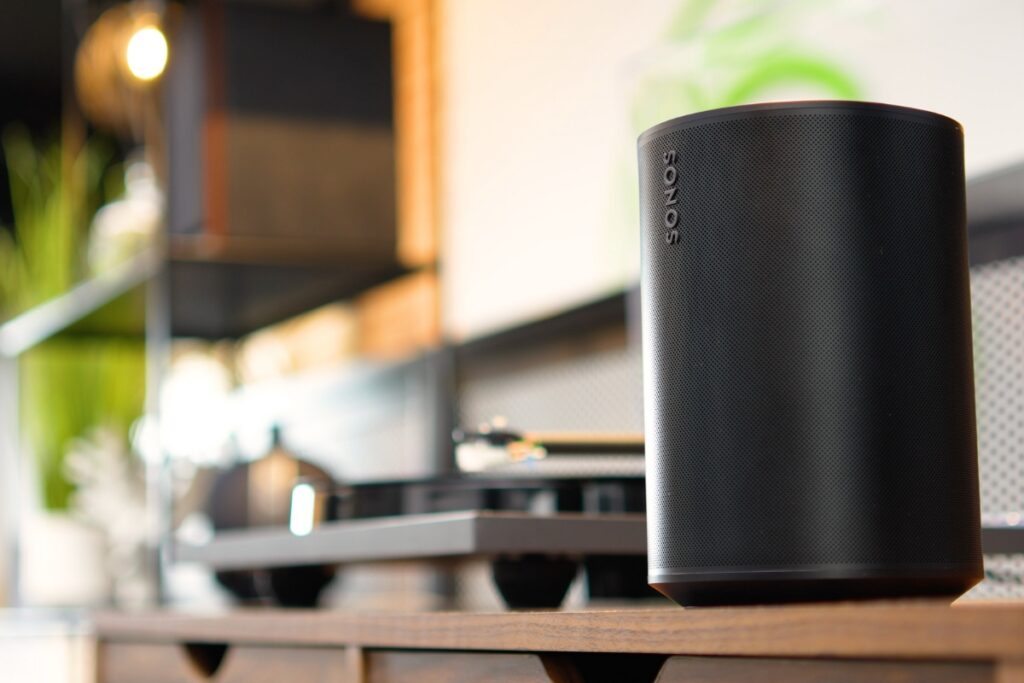
Sonos Era 100 (RRP £249)
| See Latest Price: Available at Smart Home Sounds - Includes Free 6 Year Extended Warranty Available at Sonos.com Available at Amazon.co.uk |
The Sonos Era 100 is the brand’s new and improved smart speaker. It replaces the older Sonos One (Gen 2) and has a 25% larger woofer for deeper bass and two angled tweeters offering stereo sound. This new-look speaker also features a refreshed appearance and better connectivity, including Wi-Fi 6, Bluetooth support, and the ability to play audio from a wired source using the optional Sonos Line-In Adapter.
The Era 100 has taken everything good from the Sonos One (Gen 2) and made it even better. Its refreshed topside controls and compact footprint still make it the perfect companion for your bedside table, desktop or kitchen counter. While the improved stereo performance gives this speaker an edge over its predecessor when it comes to sound.
Along with the improvements to the sound quality, the Era 100 is now an even more versatile option too, offering support for both Bluetooth and line-in (which wasn’t available on the Sonos One). This means playing the music you love on Sonos is easier and more accessible than ever before.
Era 100 also maintains hands-free voice control via Sonos Voice and Amazon Alexa. However, there’s no support for Google Assistant.
The Era 100 is the easiest Sonos speaker to integrate into the home, and because it can be stereo paired or used as surround sound rears in a Sonos home cinema, it can be easily expanded on too. It’s the perfect starting point for a budding Sonos ecosystem, no doubt about it.
More: Sonos Era 100 Review: Truly Impressive Stereo Sound
Best Sonos Speaker For A Small Room
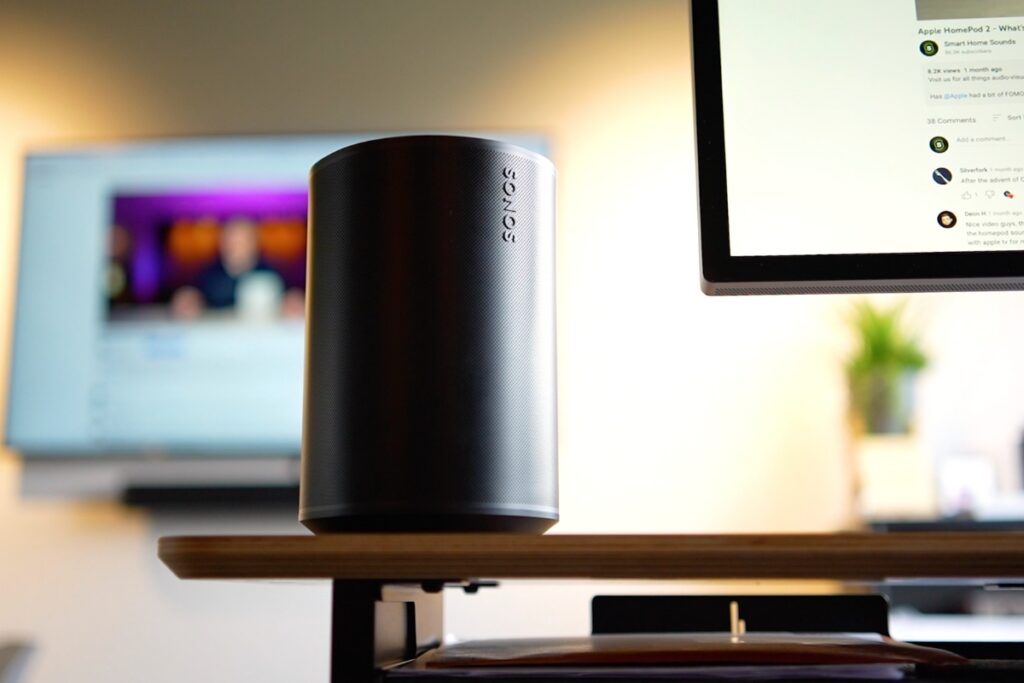
Sonos Era 100 (RRP £249)
| See Latest Price: Available at Smart Home Sounds - Includes Free 6 Year Extended Warranty Available at Sonos.com Available at Amazon.co.uk |
For all of the reasons mentioned above, the Era 100 is also our top choice for small spaces. Packed full of smarts and possessing upgraded sound performance to match, this will be a worthy single speaker solution for almost every small room.
Best Sonos Speaker For Spatial Audio
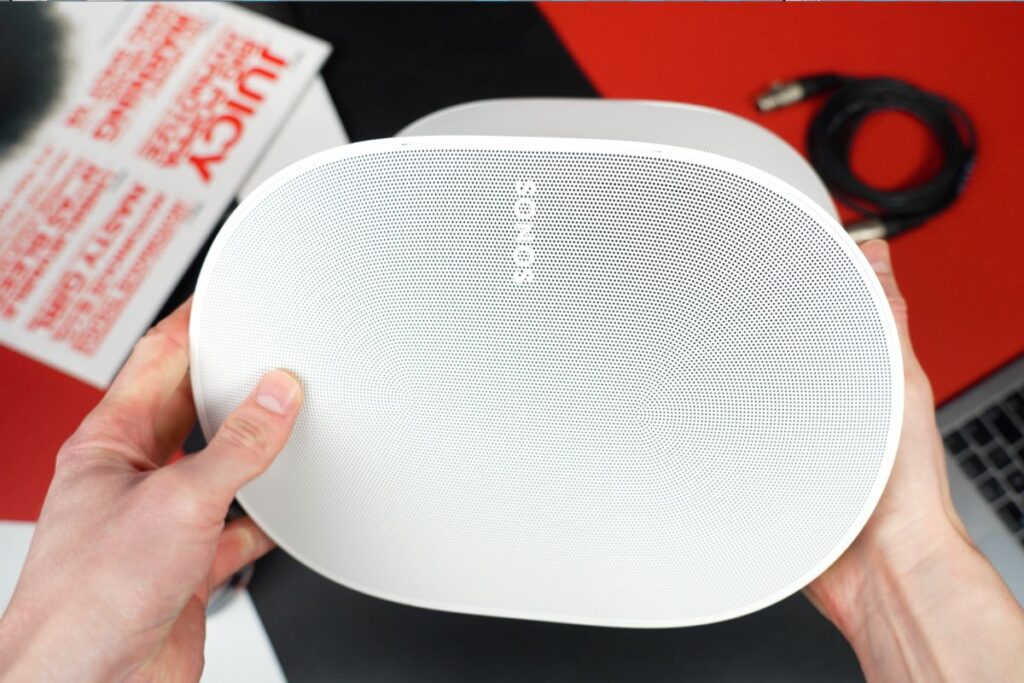
Sonos Era 300 (RRP £449)
| See Latest Price: Available at Smart Home Sounds - Includes Free 6 Year Extended Warranty Available at Sonos.com Available at Amazon.co.uk |
The Sonos Era 300 treads new ground for a Sonos smart speaker, casting its sights on the world of spatial audio and Dolby Atmos. Featuring the same line-in and Bluetooth support as the Era 100, this speaker is equally versatile yet considerably more immersive.
Offering a sneak peek into the future of music, the Era 300 features six drivers that fire in all directions, including upwards, to demonstrate the immersive potential of spatial audio and Dolby Atmos. The Sonos Era 300 effortlessly delivers a three-dimensional sound signature that will take your favourite spatial tracks from the likes of Apple Music or Amazon Music to the next level.
Convincing sound that comes from all around you has never been better replicated by a single unit (hence why producers are using these in the spatial audio mixing studios themselves). The Era 300 bounces sound off the walls and ceiling in your listening zone to create a compelling and all-encompassing audio experience that only gets better when you stereo-pair two together.
You can also pair two as surround sound rears with a Dolby Atmos soundbar in a Sonos home cinema, making this Sonos’ only upward-firing rear option available. Naturally, this offers a mind-blowing level of immersion. However, this is a luxury deployment of these speakers, and if you don’t have the budget to spare, a pair of Sonos Era 100’s will be more than sufficient.
Spatial audio is still a little hit and miss and isn’t yet widely available, but if you’re looking for the best way to enjoy this new format, the Sonos Era 300 is the way to go.
More: Sonos Era 300 Review: One Month On...
Best Sonos Speaker For Hi-Fi Listening
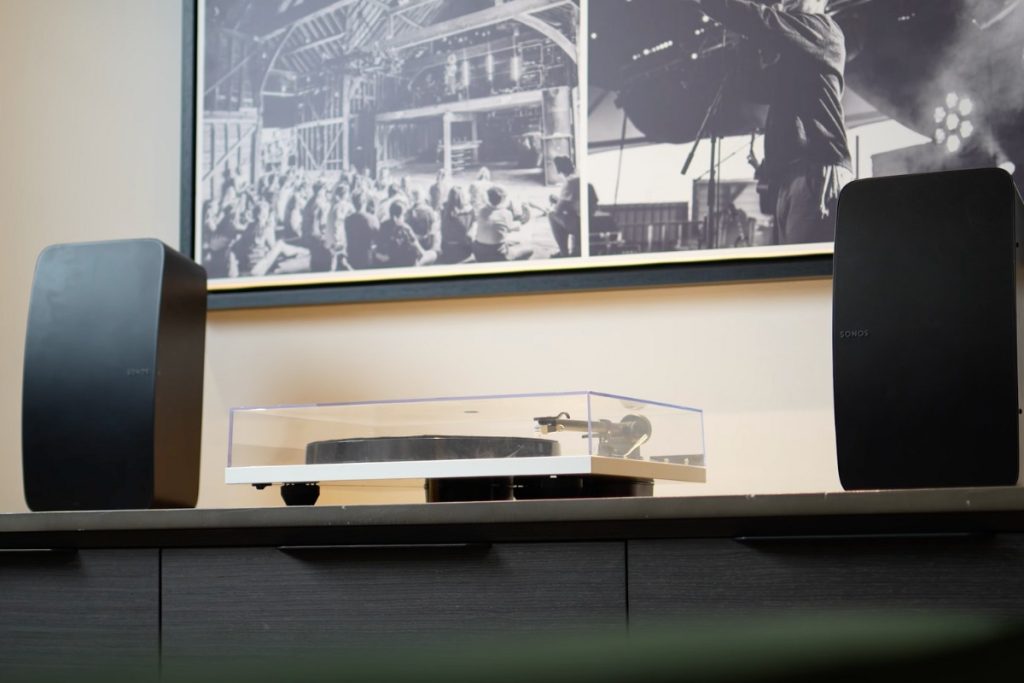
Sonos Five (RRP £549)
| See Latest Price: Available at Smart Home Sounds - Includes Free 6 Year Extended Warranty Available at Sonos.com Available at Amazon.co.uk |
Sitting as the powerhouse in the Sonos lineup, the flagship Sonos Five is the brand's biggest and most room-filling speaker (excluding soundbars, that is). Released as a replacement for the Play:5 in 2020, the Sonos Five preserves a lot of the essential features that its predecessor was well known for and builds on them.
The driver array follows a very similar blueprint to the Play:5, with six class-D amplifiers powering three 10cm mid-woofers and three tweeters. There’s still a 3.5mm aux line-in to connect an external device, and you can still orient the speaker in three different ways. However, the Sonos Five includes improved wi-fi connectivity and improved processing to step up the performance even further.
The Sonos Five is the flagship option in the Sonos lineup, and you can tell. No, it doesn’t offer the same depth and immersion as something like the Sonos Era 300. But the Five is capable of unleashing some detailed rip-roaring power that’s perfect for traditional hi-fi and for listening loud.
Admittedly, it lacks the versatility of some of the newer Sonos speakers (there’s no voice control, bluetooth or spatial audio). But if you’re on the lookout for a more traditional stereo speaker that offers pure hi-fi quality without any of the fuss, the Five will be a great option.
More: Sonos Era 300 vs. Sonos Five: Which Premium Speaker is Best?
Best Portable Sonos Speaker
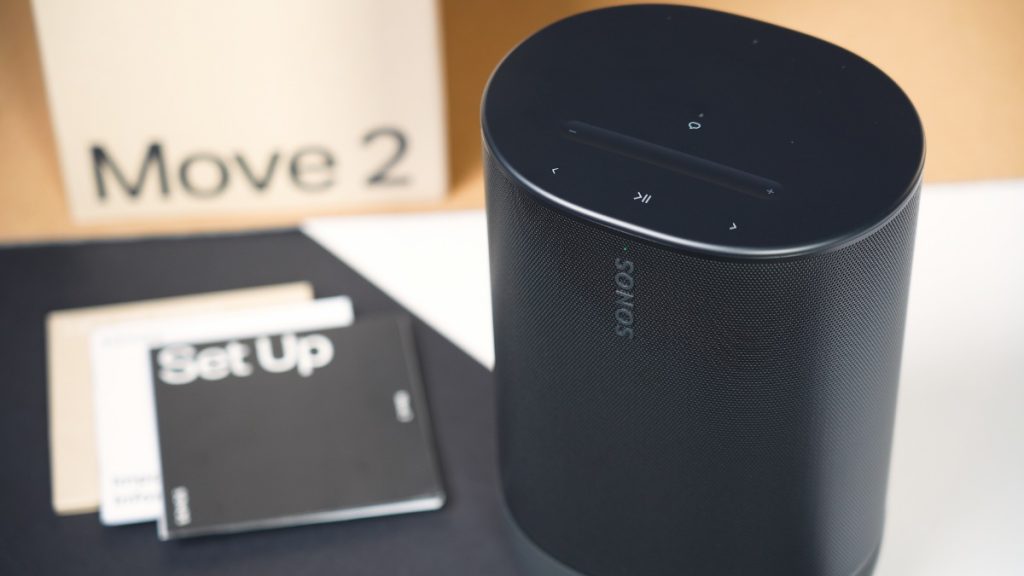
Sonos Move 2 (RRP £449)
| See Latest Price: Available at Smart Home Sounds - Includes Free 6 Year Extended Warranty Available at Sonos.com Available at Amazon.co.uk |
The Sonos Move 2 is the second iteration of Sonos' popular portable speaker, and it's an all-around improvement over its predecessor. It offers up to 24 hours of playback on a single charge (double the battery life of the original Move), as well as stepped-up stereo sound thanks to new dual-tweeters. Sonos has also expanded the USB-C functionality of the Move 2 and given it a refreshed design that's just as durable as the original.
The Move 2 is what we'd call a "hybrid portable speaker." It's not quite as compact and lightweight as the Sonos Roam, making it less suitable for tossing in a backpack and taking on the go. But it's still easy to move around the house and garden, thanks to its built-in handle and IP56 weatherproof rating.
It also comes with an upgraded charging dock as standard, making it easy to keep it topped up when you're not using it. There’s also support for Bluetooth, line-in via USB-C and powerbank functionality too.
Performance-wise, the Move 2 sits somewhere between the Sonos Era 100 and the Sonos Era 300. The updated internals ensure the bass output is punchy, the soundstage is full, and the details are crisp and clear too. Bundle all of that with the added functionality, and you’re looking at a very successful sequel that can deliver signature Sonos quality in every room in the house. Sounds like a no-brainer, right?
More: Sonos Move 2 Review: Premium Portability Perfected?
BEst SOnos Speaker For Taking on The Go

Sonos Roam (RRP £179)
| See Latest Price: Available at Smart Home Sounds - Includes Free 6 Year Extended Warranty Available at Sonos.com Available at Amazon.co.uk |
The Sonos Roam is a small, lightweight, and versatile portable Bluetooth speaker that's perfect for bringing signature Sonos sound everywhere you go. It's IP67 weatherproof rated, so you can use it in the bathroom, kitchen, or even outdoors. And when you're at home, it can connect to your Wi-Fi network and be used as part of your wider Sonos system.
You can stream music to the Roam from your phone, tablet, or computer, or even play your vinyl collection from a Bluetooth-enabled turntable. The Roam also features built-in mics for voice control, but if that’s not for you, you could opt for the Sonos Roam SL, which goes without voice control and comes in at a cheaper price of £159.
As the smallest speaker in the lineup, the Sonos Roam won’t offer the same impactful sound as some of its bigger counterparts. But the audio is clean, detailed and very impressive for such a small unit. If you’d like a little more, you could always pair two together for a more immersive stereo performance too.
The Roam is the out-and-out portable option from Sonos, and quite frankly, its hard to argue with. If you’re always on the go and need a compact and reliable sound companion, the Roam will tick the majority of your boxes.
More: Sonos Roam Review: The Best Portable Speaker in 2023?
Best Budget Sonos speaker
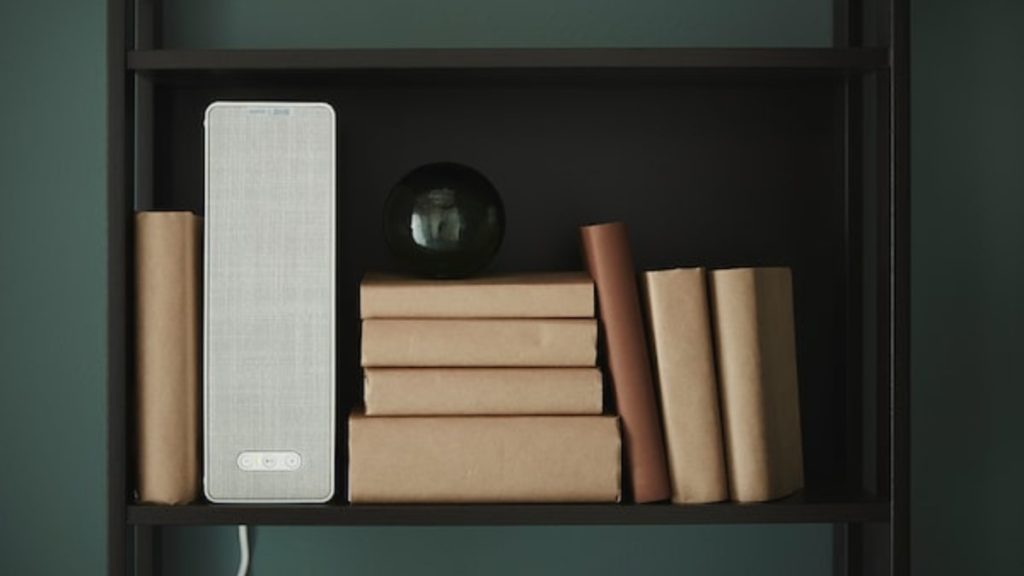
IKEA Symfonisk Bookshelf Speaker (RRP £115)
| See Latest Price: Available at ikea.com |
A joint venture between IKEA and Sonos, the IKEA Symfonisk Bookshelf speaker is the perfect entry-point into the Sonos ecosystem if you’re looking to spend under £150.
This stylish lifestyle-focused bookshelf speaker offers a pretty similar performance to the fan-favourite Sonos One (Gen 2) and can be stereo paired or used as rear surrounds in a Sonos Home Cinema. No, this won’t be for everybody, but if you’re looking for an easy and low-risk way to get into Sonos, this will be it.
IKEA also offers a variety of accessories to seamlessly integrate this speaker into your home, which is an added bonus too.
Best Sonos Dolby Atmos SOundbar
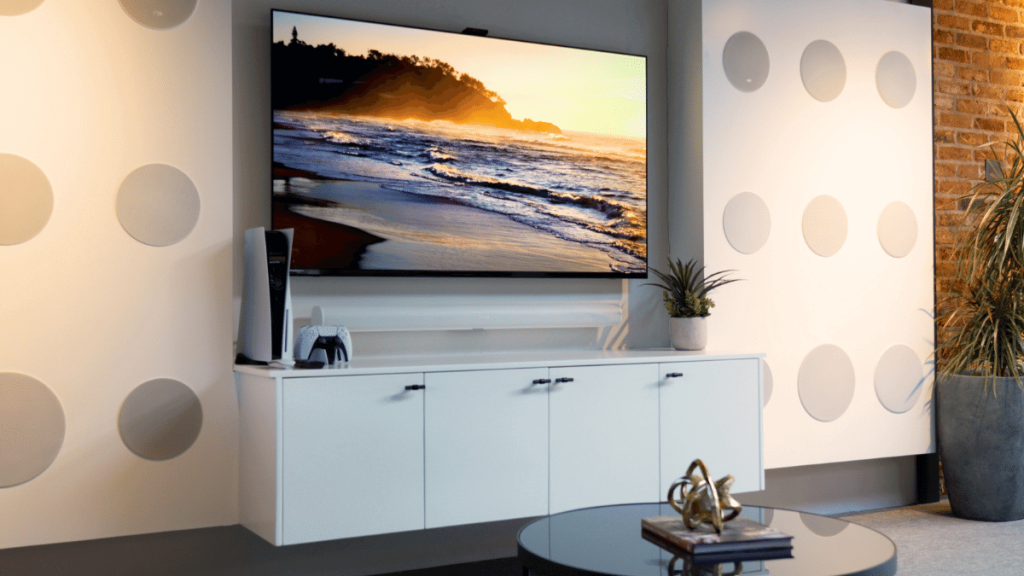
Sonos Arc (RRP £899)
| See Latest Price: Available at Smart Home Sounds - Includes Free 6 Year Extended Warranty Available at Sonos.com Available at Amazon.co.uk |
Sonos’ flagship Dolby Atmos soundbar is everything you’d expect and more. The Sonos Arc is expensive, but if compelling surround sound performance in a stylish one-bar package is what you’re after, nothing matches it at this price point.
It’s a big unit that we recommend for TVs that are 55 inches or bigger, but this size is necessary to accompany the 11-driver phased array.
The Arc’s dedicated upward, side and front-firing drivers all help to deliver one of the most convincing three-dimensional Dolby Atmos surround sound presentations we’ve heard from a single soundbar, with a wider soundstage than any other Sonos soundbar in the lineup.
Of course, Sonos has also long been the gold standard for usability, and the Arc follows this same mantra with all the usual Sonos functionality built-in. Setup is super simple, and adding additional components like a Sonos Sub (Gen 3) for added bass or a pair of Era 300’s for enhanced surround performance is easy too.
The Arc is easily the best soundbar in the Sonos lineup, and we’d go as far as to say its the best standalone Dolby Atmos soundbar at its price point in the wider market too. It’s a phenomenal performer for all types of audio, and although there may be better out there, you need to be prepared to spend even more to get your hands on them.
More: Sonos Arc Review: Is It Worth It In 2023?
Best Compact Sonos Dolby Atmos Soundbar
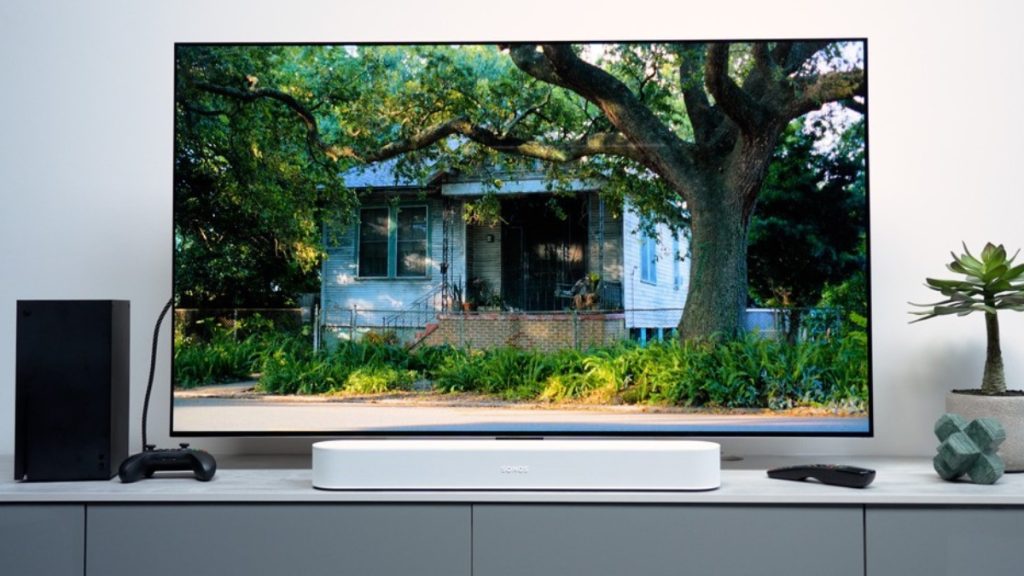
Sonos Beam (Gen 2) (RRP £499)
| See Latest Price: Available at Smart Home Sounds - Includes Free 6 Year Extended Warranty Available at Sonos.com Available at Amazon.co.uk |
Don't let the Sonos Beam (Gen 2)'s compact size fool you. This is a multi-award-winning soundbar that doesn’t just talk the talk; it walks the walk too.
Despite lacking physical upward-firing height speakers, the Beam (Gen 2) offers a thoroughly convincing presentation of Dolby Atmos surround sound, even though the height channels are delivered virtually.
Atmos aside, whether you’re enjoying TV audio, music or radio, it will feel both crystal clear and expansive, making it an excellent option for filling small-to-medium-sized rooms. In our opinion, this is comfortably the best compact Dolby Atmos soundbar at this sort of price.
No, it's not quite the Sonos Arc, but the Beam (Gen 2)'s compact dimensions make it super easy to integrate into your home. Factor in the fact that you're getting all of Sonos' multi-room and streaming features for a more wallet-friendly price; I can assure you, you won’t wish you had gone any bigger.
More: Sonos Beam (Gen 2) Review: Is It Worth It In 2023?
Best Sonos Soundbar For A Small Room
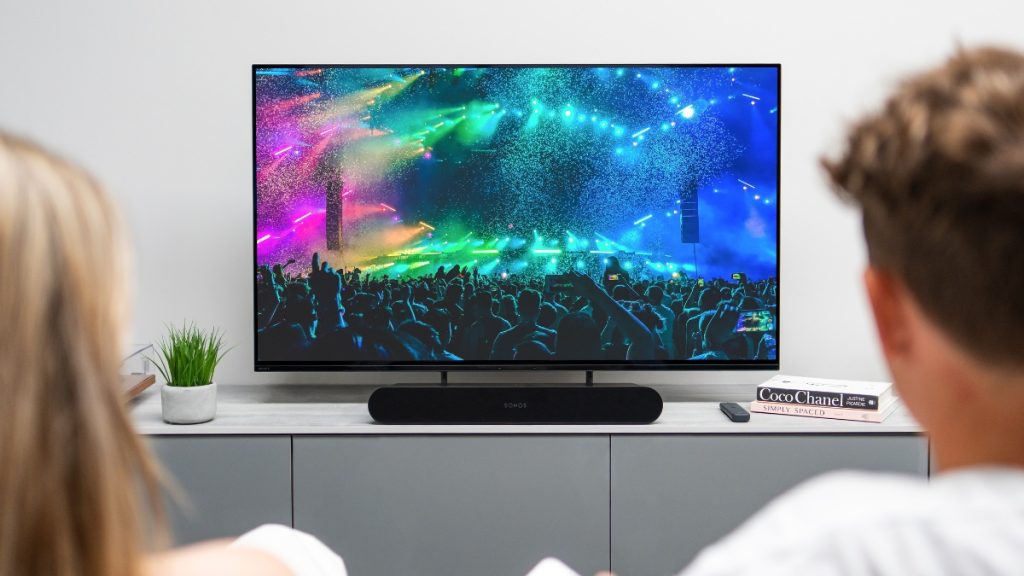
Sonos Ray (RRP £279)
| See Latest Price: Available at Smart Home Sounds - Includes Free 6 Year Extended Warranty Available at Sonos.com Available at Amazon.co.uk |
The Sonos Ray is Sonos’ entry-level soundbar that’s ideal for the smaller spaces within your home. Coming in at £279, this will be a neat option to improve the vocal and mid-range performance of any secondary TV’s within your space.
There’s no HDMI connection (the Ray uses optical), Dolby Atmos support or dedicated centre channel for dialogue. However, the Ray will deliver Dolby Digital audio and a balanced, size-defying sound quality that will undoubtedly give your TV a much-needed boost.
The Ray does fall short of the other Sonos soundbars, but it's a smart choice if you’re looking for a simple solution to achieve good sound for both music and movies in the smaller spaces in your home. You can create a full home cinema with the Ray, but our advice would be to save for the Beam (Gen 2) if that’s your plan, budget-providing, of course.
More: Our Comprehensive Sonos Ray Review
Best Sonos Surround Sound Rears

2x Sonos Era 300 (RRP £898)
| See Latest Price: Available at Smart Home Sounds - Includes Free 6 Year Extended Warranty Available at Sonos.com Available at Amazon.co.uk |
The Sonos Era 300’s may not be the most cost-effective surround-sound rear option, but when it comes to pure performance, they are the best. As Sonos’ only upward-firing rear option, they deliver a level of immersion that is unmatched by any other choices within the Sonos lineup, and if money was no object, they’d be our go-to option every time.
Its worth remembering that the Era 300’s are only compatible with Sonos’ Dolby Atmos sounbars. So, if you’re planning on using these as surround sound rears, you’ll need a Sonos Arc or Beam (Gen 2) to do so. We often recommend the Sonos Arc and a pair of Sonos Era 300’s as our killer combination, as it delivers a truly immersive cinematic experience that Sonos has never offered before.
Of course, if this feels slightly out of budget, the option of a pair of Sonos Era 100’s is also very tempting. Despite not offering the same immersive potential as the Era 300’s, the Era 100’s will offer more than enough performance to feel truly captivating at an even more affordable price point.
More: Adding Sonos Surround Sound Speakers: Our Top 3 Tips
Best Sonos Subwoofer
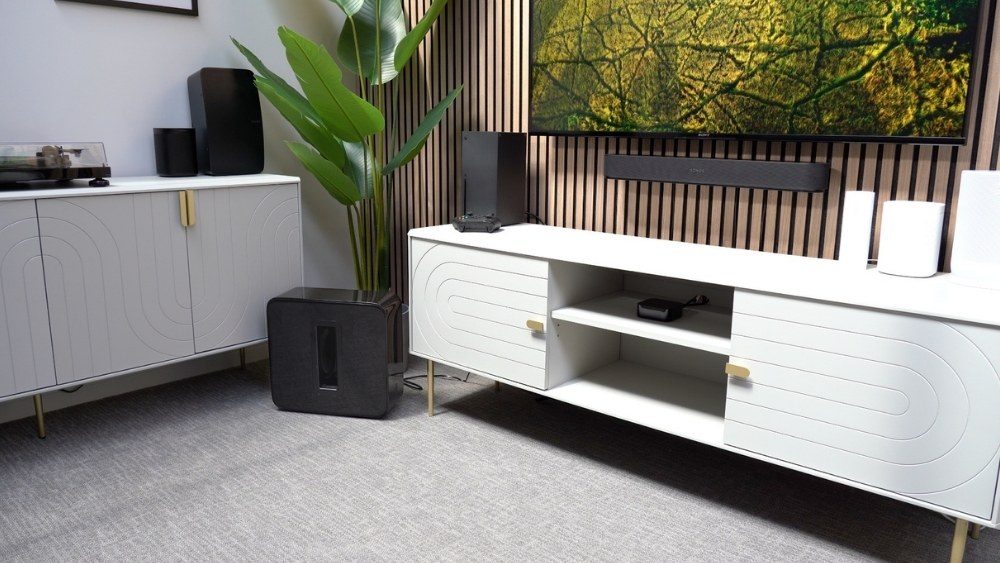
Sonos Sub (Gen 3) (RRP £799)
| See Latest Price: Available at Smart Home Sounds - Includes Free 6 Year Extended Warranty Available at Sonos.com Available at Amazon.co.uk |
Unlock the full power of your Sonos home cinema with Sonos’ flagship subwoofer. The Sub (Gen 3) will take your audio to the next level, adding new layers and rumbling bass to your favourite music and movies. If you love your bass-heavy music and high-octane blockbusters and you’re willing to look past the premium price tag, this will undoubtedly be the right option for your space.
Compatible with all Sonos soundbars, this is the best choice if your looking to add bass that you can really feel. The Sub (Gen 3) is also capable of being positioned upright or flat on the floor, so this Sub can be neatly tucked under furniture if need be to keep the bass discrete yet uncompromisingly bold.
We normally suggest this as the perfect partner for the Sonos Arc, as their expansive and powerful performances compliment each other exceptionally well, especially in large open-plan living spaces.
More: Sonos Sub Review: Boost Your Setup With Big Bass
Best Budget Sonos Subwoofer
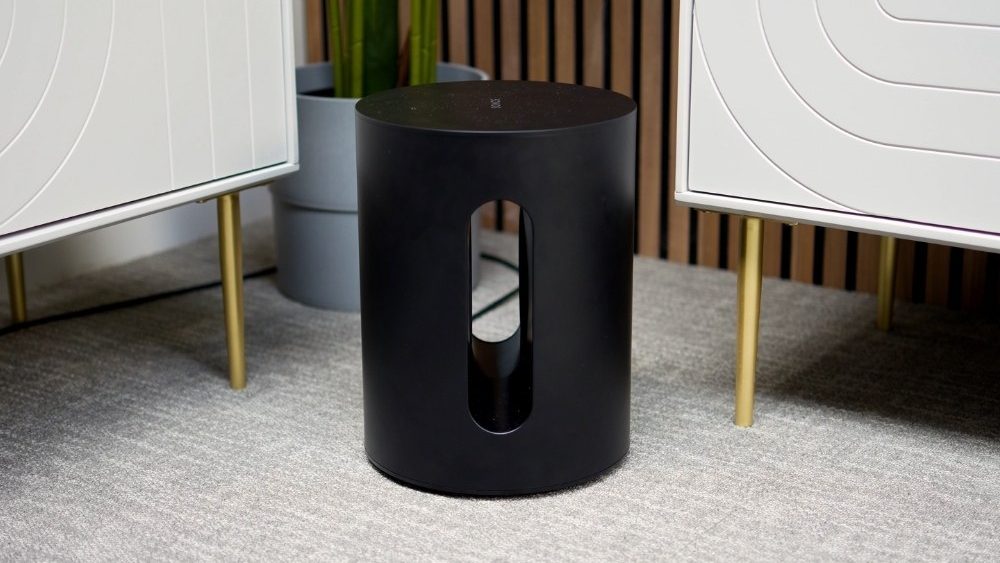
Sonos Sub Mini (RRP £429)
Despite not matching the heights of the Sonos Sub (Gen 3), the Sonos Sub Mini is a compact subwoofer option that still delivers snappy and impactful bass that goes as low as 25 Hz.
Perfect for bringing big sound to smaller spaces, the Sub Mini has been designed to maximise its bass output from its compact form factor, pushing its bigger brother surprisingly close at lower volumes. Admittedly, its not quite as dynamically nuanced as the Sub (Gen 3), but it offers impressively clean and tight bass that will unleash more depth from all of your films and music.
Its compact, cylindrical shape also makes it the perfect subwoofer to tuck in the corner of your room and forget about while you sit back and enjoy the show.
We tend to recommend pairing the Sub Mini with the Sonos Beam (Gen 2), as they’re brilliantly matched tonally. The larger Sonos Arc can often feel slightly overpowering, so we’d suggest stepping up to the bigger Sub (Gen 3) if you want optimum performance.
More: Sonos Sub Mini Review: The Right Sonos Subwoofer For You?
More: Sonos Sub Mini vs. Sonos Sub (Gen 3): Which Subwoofer is Right For Me?
Best Sonos Setup For A Living Room
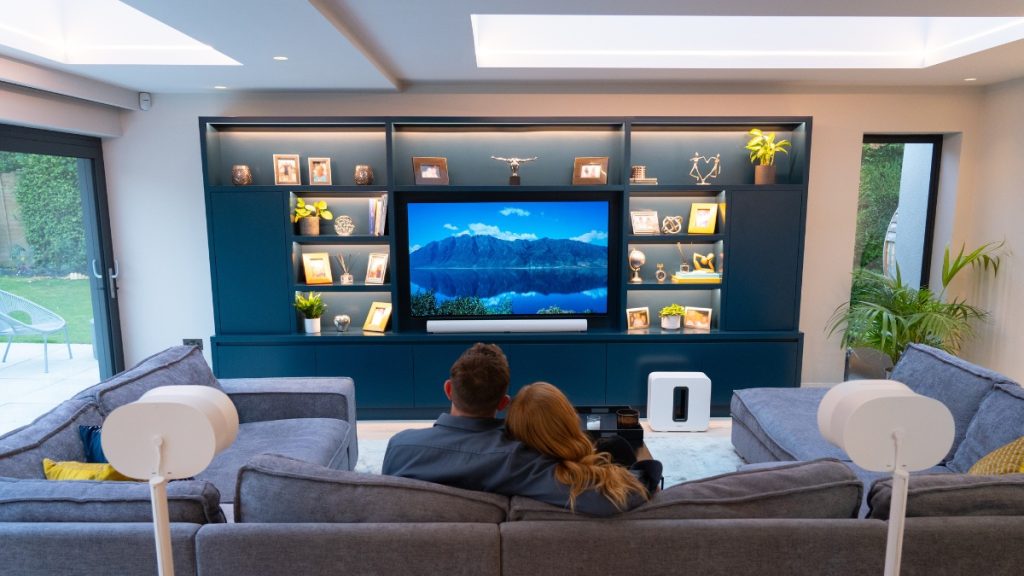
Sonos Arc, Sonos Sub (Gen 3) & 2x Sonos Era 300's (RRP £2,596)
| See Latest Price: Available at Smart Home Sounds - Includes Free 6 Year Extended Warranty Available at Sonos.com Available at Amazon.co.uk |
A film fanatics dream, this is the best Sonos Home Theatre setup you can buy from Sonos, no doubt about it. However, you’ll be paying a stiff premium to get your hands on one. That being said, if money’s no object and a comprehensive home cinema is what you’re after, then you’re looking in the right place.
With all three Sonos flagship home cinema components working together, you can expect the most immersive sound possible from a complete Sonos surround sound system.
The Sonos Arc and the new upward-firing Sonos Era 300s combine their overhead channels to deliver stunningly detailed and accurate Dolby Atmos height effects, while the Sub (Gen 3) offers ground-shaking bass that will transport you to the centre of the action.
More: Testing EVERY Sonos Arc Home Cinema Setup
Best Budget Sonos Setup For A Living Room
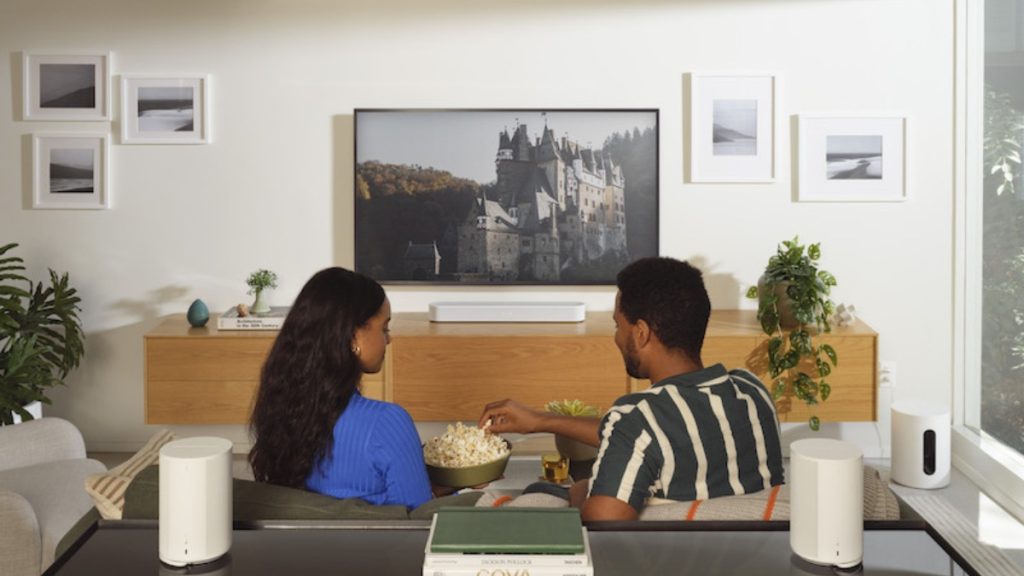
Sonos Beam (Gen 2), Sub Mini & 2x Sonos Era 100's (RRP £1,426)
| See Latest Price: Available at Smart Home Sounds - Includes Free 6 Year Extended Warranty Available at Sonos.com Available at Amazon.co.uk |
As one of the most popular options when it comes to Sonos Home Cinema, this compact bundle combines three exceptional Sonos speakers that are more manageable, more discreet and, most importantly, more affordable than their flagship counterparts.
This bundle is perfect for those with small-to-medium-sized rooms looking for a complete home cinema package and offers a performance that is very hard to beat at this price point.
The multi-award winning Beam (Gen 2), Sonos Era 100 pair, and Sonos Sub Mini are all perfectly matched to deliver captivating Dolby Atmos audio with clean and tight low-end in an impressively compact package. No, it won’t compete with its larger peers, but if space is limited, this is the best way to achieve optimum immersion.
More: Testing EVERY Sonos Beam (Gen 2) Home Cinema Setup
Best Sonos Accessory
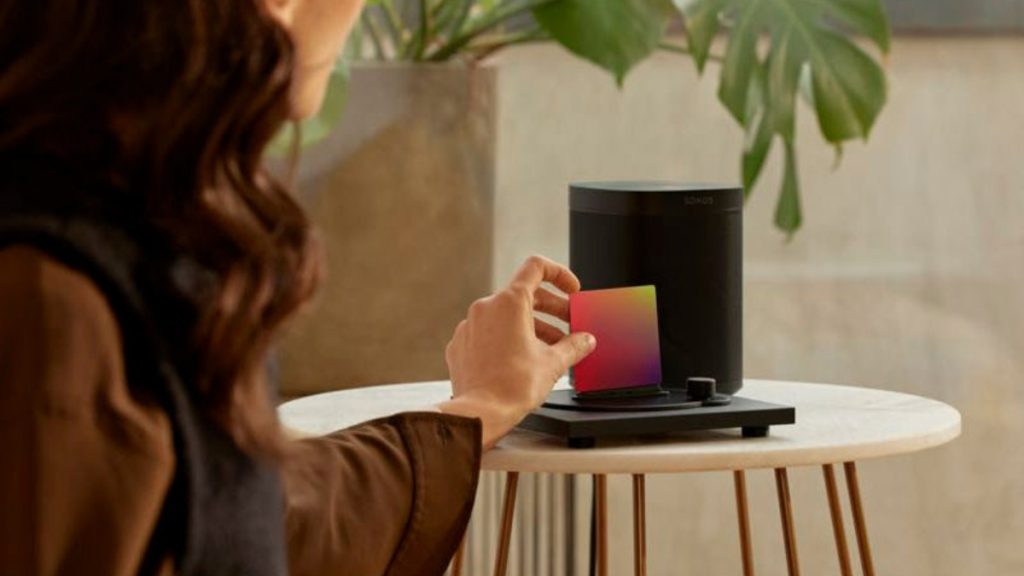
MoodPlay (RRP £223)
| See Latest Price: Available at moodblocks.com |
A brand-new take on music, MoodPlay brings the tactile joy of traditional music listening to the digital world through your Sonos speakers.
‘Works With Sonos’ certified, this device works with MoodBlocks, which are uniquely designed smart cards with built-in NFC technology. These can contain thousands of songs, as well as albums, audiobooks and playlists.
Combine this with your Sonos speaker, and you’ve got a stunning physical copy of your favourite music that feels worth having on show. It’s unique, fully customisable and an exciting product that we think has a big future in the world of Sonos.
Best Turntable To USe With Sonos

Pro-Ject T1 Phono SB (RRP £379)
| See Latest Price: Available at Smart Home Sounds - Includes Free 6 Year Extended Warranty Available at Amazon.co.uk |
Built with no plastic parts, an aluminium tonearm and an Ortofon OM 5E cartridge fitted as standard, this turntable is a standout entry-level performer that combines both convenience and ease of use in a stunning, premium-feeling vinyl package.
The Pro-Ject T1 Phono SB also features an integrated bypassable preamplifier for simple connection to any hi-fi system, which is the main reason why this is our go-to choice for combining with a Sonos system.
More: Pro-Ject T1 Phono SB vs. Rega Planar 1 Plus
Best Sonos Product In 2024
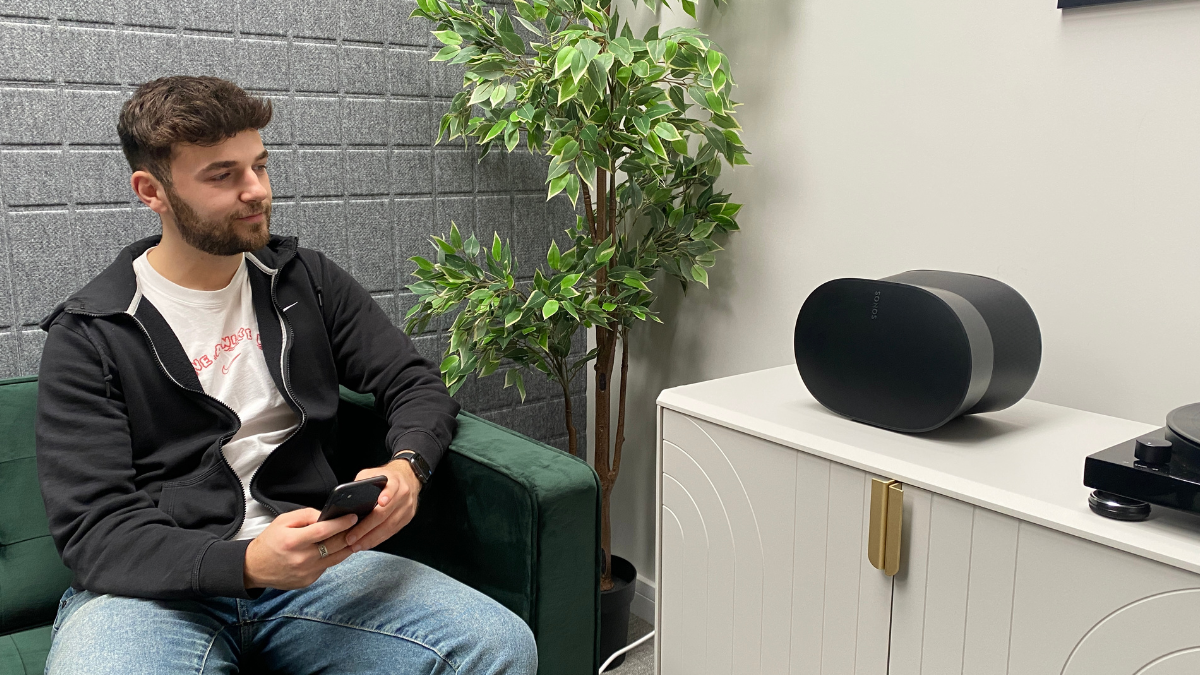
Sonos Era 300 (RRP £449)
| See Latest Price: Available at Smart Home Sounds - Includes Free 6 Year Extended Warranty Available at Sonos.com Available at Amazon.co.uk |
As a completely new entry for Sonos back in 2023, its hard to argue with the Sonos Era 300 being our best pick overall. Spatial audio support, enhanced connectivity and the joy of upward-firing surround sound rears have been on our wishlist for a while now. So, to see this put into practise makes this more than a worthy choice as our best Sonos product this year.
More: Sonos Era 300 Review: Game Changer
We hope you find this helpful, but of course, we realise that purchasing a new soundbar is a big decision, so we are more than happy to assist with any queries you may have.
Please reach out on:
| info@smarthomesounds.co.uk | |
| Live Chat on our Website | |
| 0800 677 1100 |
There’s a Sonos speaker perfect for the occasion, discover which one is right for your space.
Sonos Black Friday Deals Start early with big savings this weekend
No need to wait until Black Friday to grab a great deal on Sonos. Save up to 20% on Sonos Home Cinema bundles including the Sonos Arc, Sonos Beam (Gen 2) and Sonos Ray soundbars.
Sonos are well known for their award-winning ecosystem and line-up of wireless speakers, soundbars and home audio products. With three soundbars, two subwoofers and a range of surround sound rear options, Sonos offer a variety of immersive home cinema setups to suit any room.
The Sonos Early Access Sale sees up to £440 off selected home cinema bundles and will run from October 27th - October 29th so act fast if you want to make the most of these great savings ahead of the Black Friday rush.
Black Friday Price Lock Promise
Worried prices might go down more next month? At Smart Home Sounds we’re offering a Price Lock Promise so you can shop with confidence and secure your stock early! If we drop our prices between now and the 27th November 2023, simply get in touch and we’ll refund you the difference. It’s that simple! T&Cs apply.
Sonos Home Cinema Sale: Save up to 20%
Sonos Arc + Sub (Gen 3) Bundle - Save £350
Sonos Beam (Gen 2) + Sub Mini Bundle - Save £190
Sonos Ray + Sub Mini Bundle - Save £150
Sonos Arc, Sub (Gen 3) + 2 x One SL Bundle - Save £440
Sonos Beam (Gen 2), Sub Mini + 2 x One SL Bundle - Save £287
Which is the best Sonos Home Cinema Bundle?
With so much choice, it can be hard to decide which Sonos Home Cinema Bundle is right for your home. The Sonos Arc is the flagship Sonos Dolby Atmos soundbar, offering the best performance out of the range. Add the powerful Sonos Sub (Gen 3) and a pair of Era 300 surround sound rears for the complete Dolby Atmos surround sound setup complete with immersive height channels and impressive bass.
which is the best budget Sonos home cinema setup?
For those on a smaller budget, our favourite setup is the Sonos Beam (Gen 2), Sub Mini and a pair of One SL surround sound rears (currently available for £999!) If you have a more compact room then the Sonos Ray and Sub Mini bundle offers impressive performance which won't over power your space.
Grab a great deal & beat the Black Friday rush (plus Free 6 Year Extended Warranty)
ARCAM are back with a brand refresh and 5 new products
British Audio brand ARCAM have unveiled their new family of luxury audio products at the brand’s press event at The Vinyl Factory in London. We had a look at the all-new Radia Series designed to appeal to those looking to step into HiFi with a refreshed, contemporary look paired with the company’s heritage great HiFi sound.
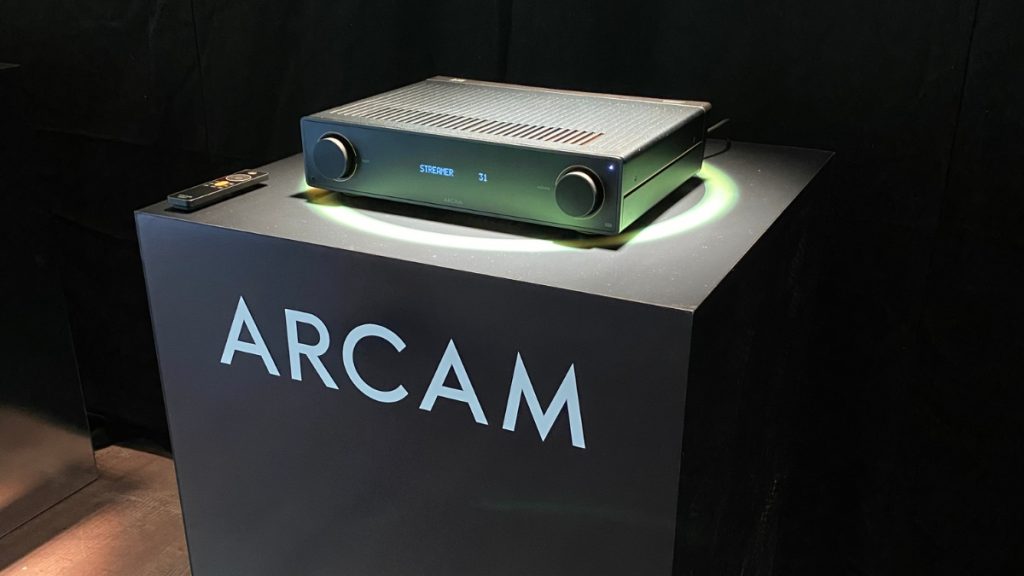
The lineup consists of three integrated amplifiers, the ARCAM A5, A15 and A25, and two digital source players; the CD5 CD player and a high-resolution streamer, the ST5. The range sets the tone for what we can expect from the brand going forwards.
With a core focus on introducing a younger audience into the world of HiFi, ARCAM have set about offering a more affordable lineup while retaining their keen audio innovation and excellent sound quality.
The Radia Series has been designed to sit apart from the competition with a more modern design including new signature Radia yellow highlights. Inspired by gaming products and adding an infusion of colour to the products, the burst of colour looked great in person, contrasting from the black.

Meet the Radia Series
The new amplifiers boast 2 way Bluetooth aptX Adaptive receivers so you can both stream to your setup and listen in private with a pair of bluetooth headphones. The amps also feature internal antennas, digital inputs, pre-amp outputs and ARCAM’s signature MM phono stage for connecting to a turntable.
ARCAM A5 - RRP £749
The entry-level amplifier in the Radia series is the 2 x 50wpc A5 Class AB stereo integrated amp. ARCAM shared that sound quality was a key point of development for this product, wanting it to be at “the centre of the music”. This amp offers impressive dynamic ability for what is, on paper, a 50W per channel amplifier and seeks to reestablish what ARCAM is about; great sound and great amplification without a big price tag.
ARCAM A15 - RRP £1099
The 2 x 80wpc A15 sits in the middle of the range and is a considerable step up in performance from the A5. Due to a large heatsink, the A15 does have a higher profile but can handle low impedance loads with ease.
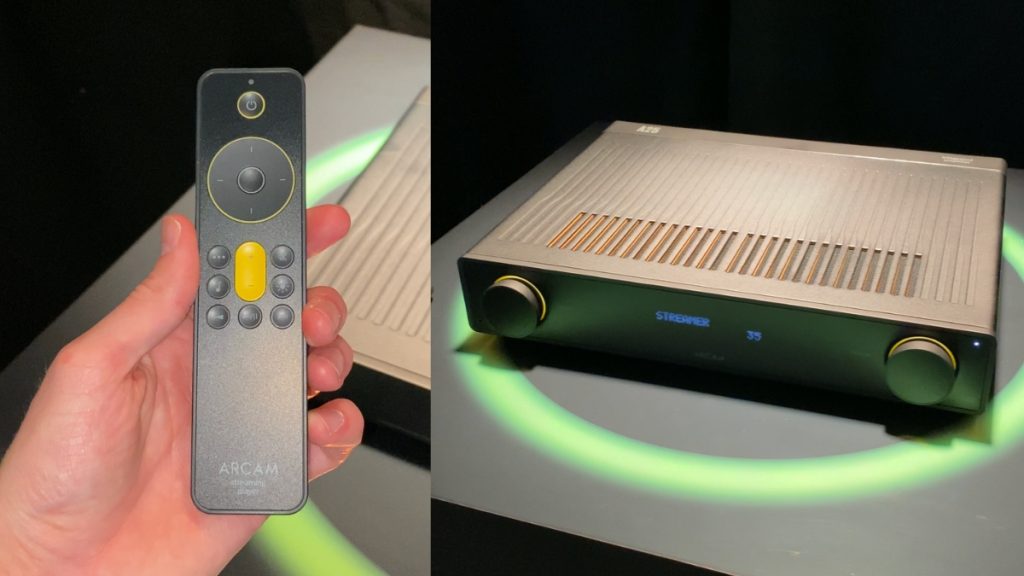
ARCAM A25 - RRP £1499
At the top of the range is the 2 x 100wpc A25 Class G amp which offers premium performance and is twice as efficient as a Class AB amp and delivers twice the power. With an improved DAC, USB-C inputs (making it great for iPhone 15 users) and an OLED front panel display this is another big step up in the range. The flagship amplifier is the best Class G ever released from the brand and offers superb resolution at normal listening volumes.
ARCAM ST5 - RRP £799
The ST5 is a high-resolution streamer which offers support for a wide range of streaming services including Spotify Connect and Tidal Connect plus internet radio. The streamer also supports MQA, Chromecast, Airplay 2 and Roon. The ST5’s internal DAC supports PCM up to 24bit/192kHz.
ARCAM CD5 - RRP £699
With the resurgence of vinyl and compact discs, ARCAM believe the younger generation looking towards physical media and with CDs being more affordable than vinyl, they’re backing this format! The CD5 CD player offers CD, CD-R and CD-RW playback, support for FLAC, WAV and MP3 formats and playback from USB mass storage. It will also playback files up to 24bit/192kHz from a USB storage device via a USB socket.

The Radia Series looks set to offer something different in this market and we’re looking forwards to getting the products into our studio for some in depth testing to see how they live up to the hype.
British Audio Brand ARCAM unveiled their new Radia Series featuring 3 integrated amplifiers, a CD player and streamer, marking a fresh new look for the brand.


